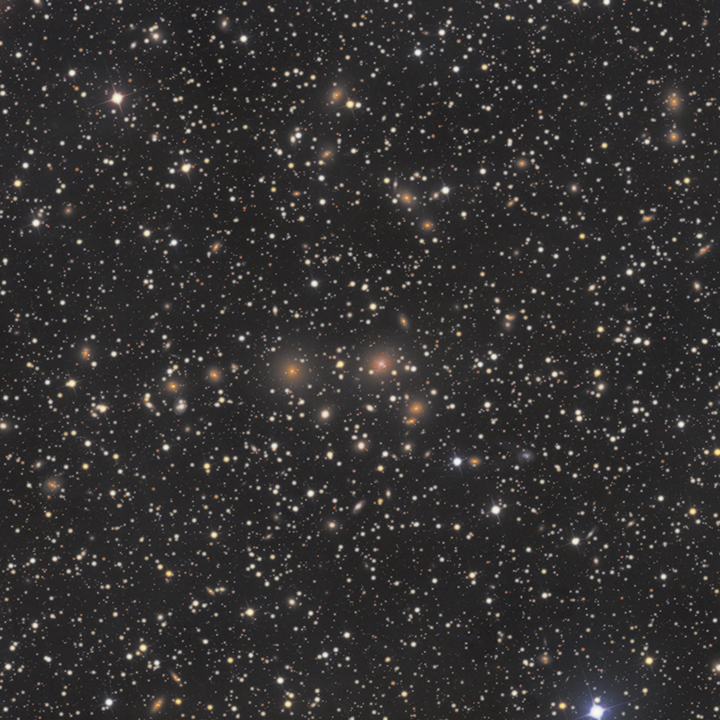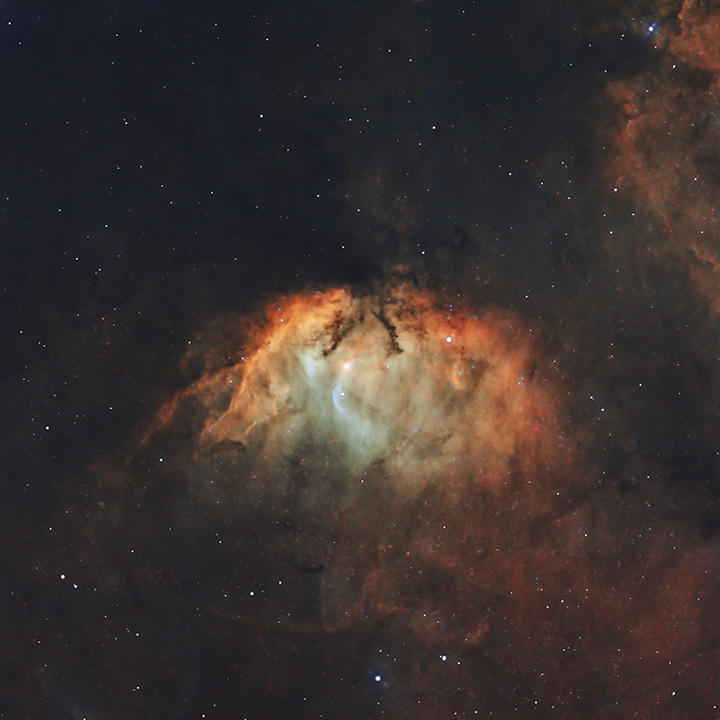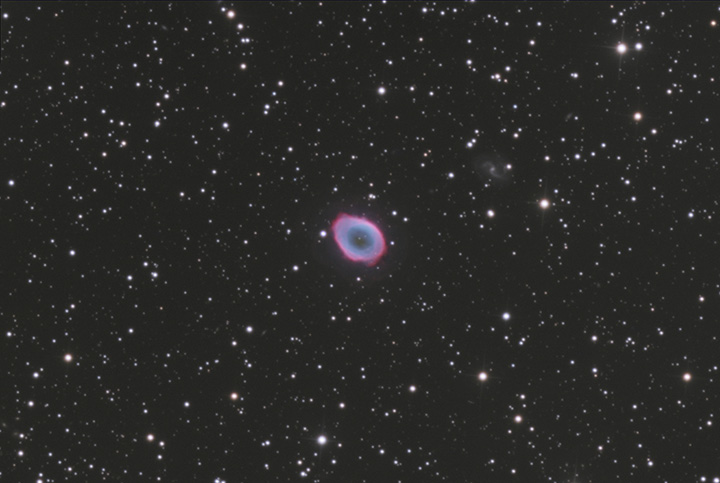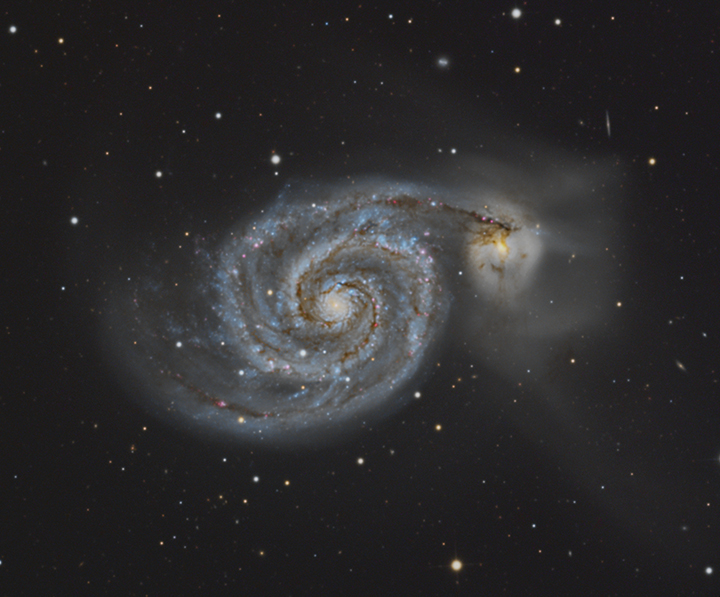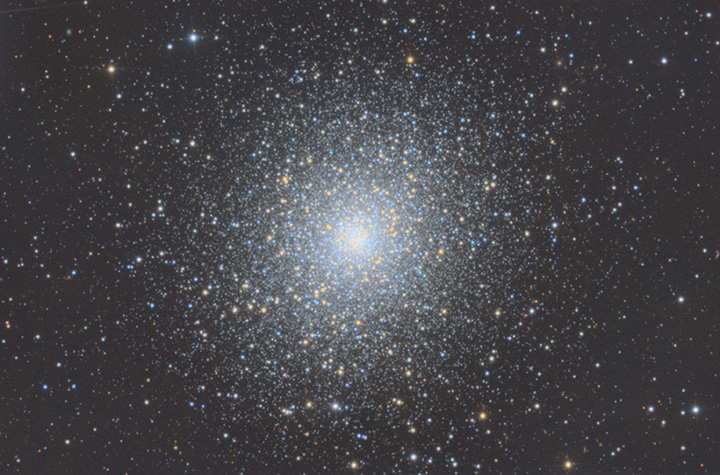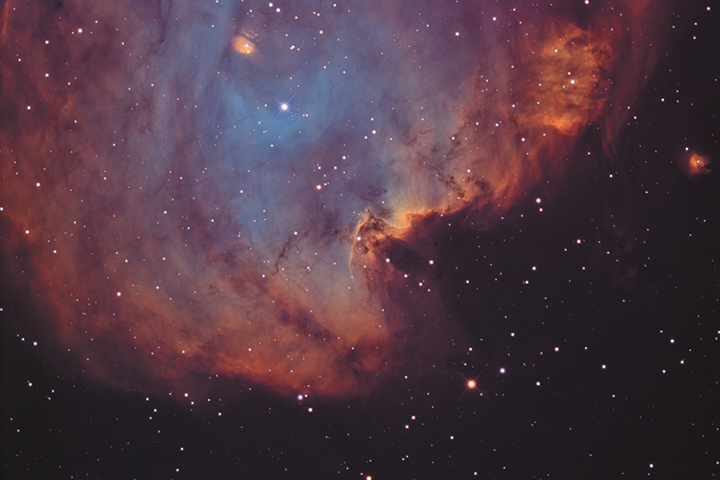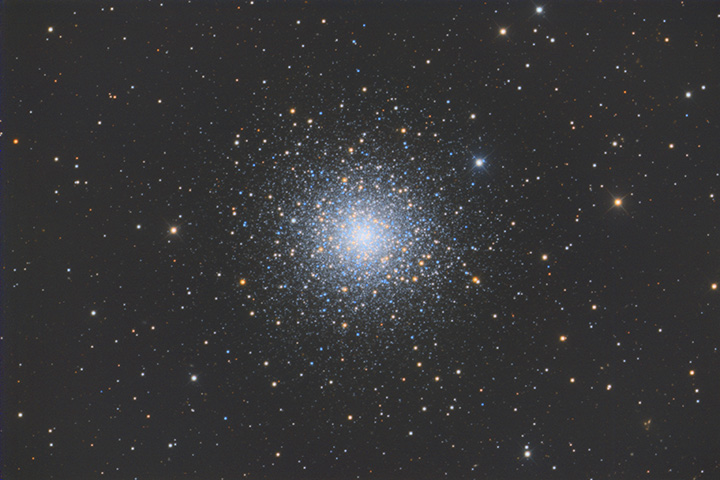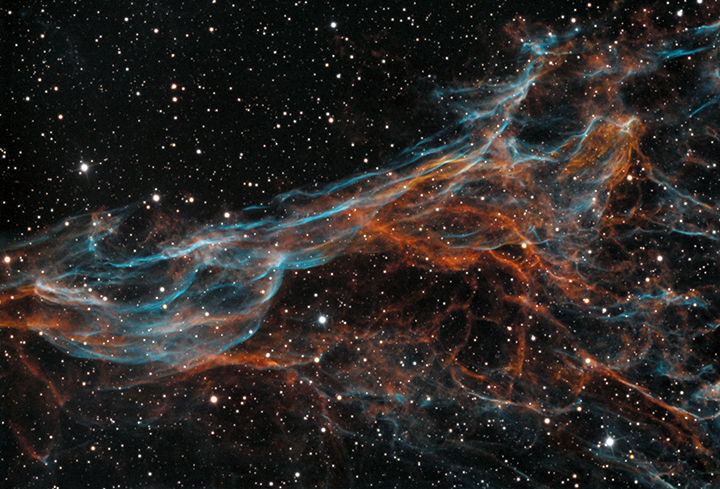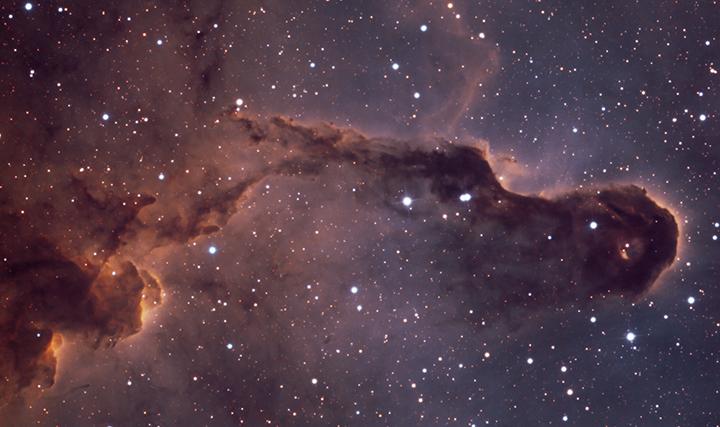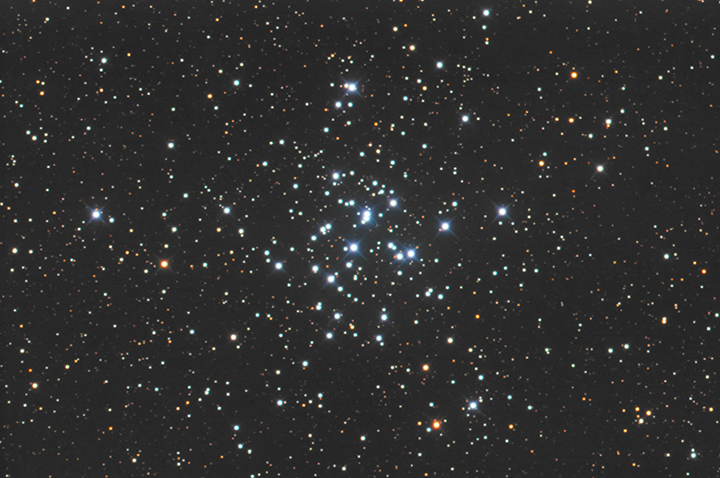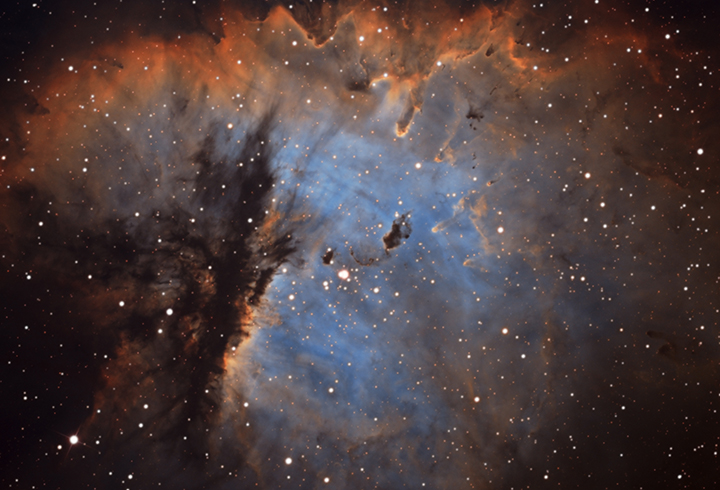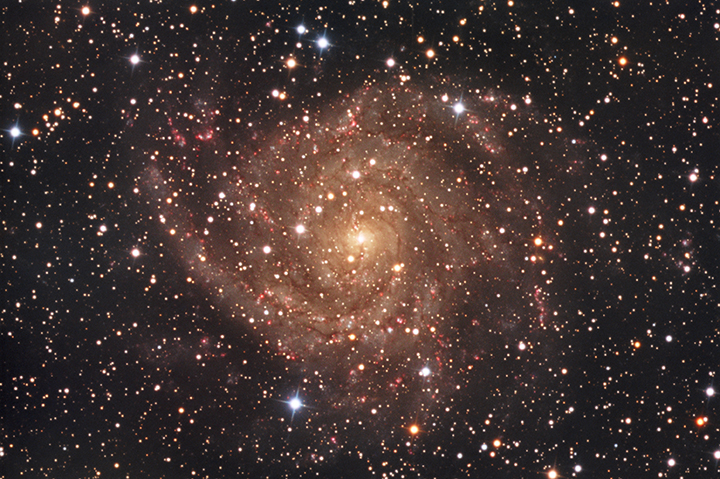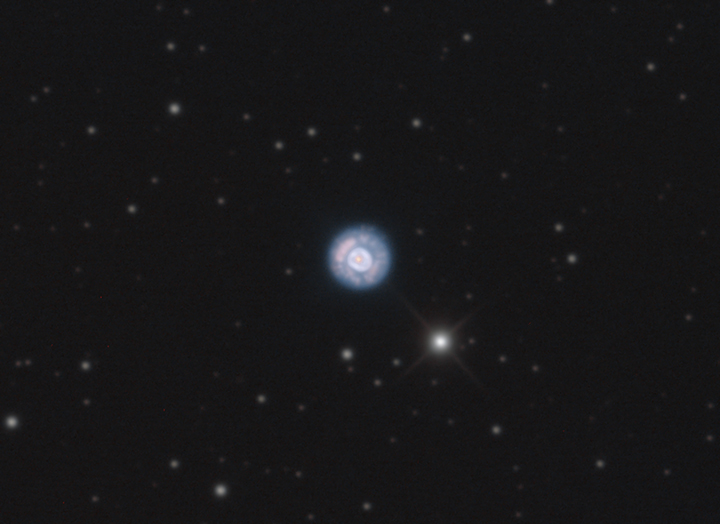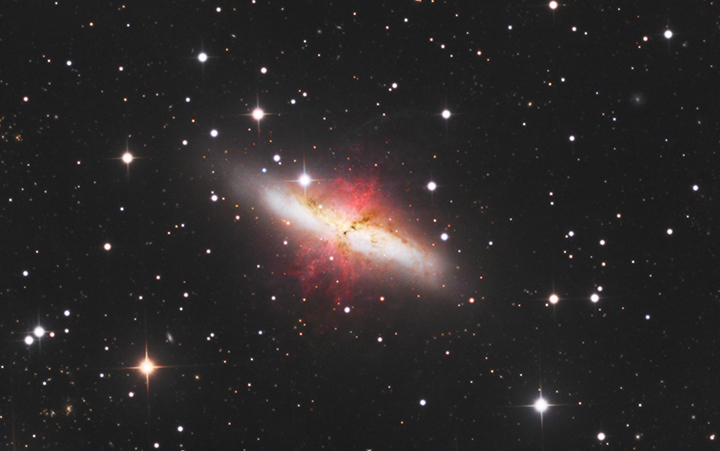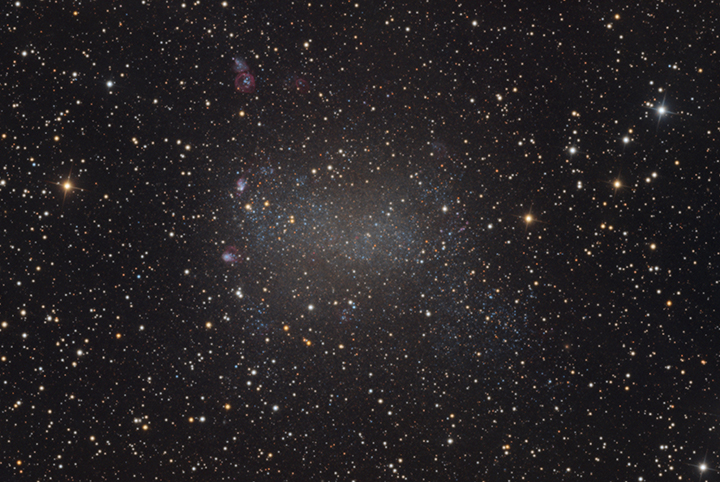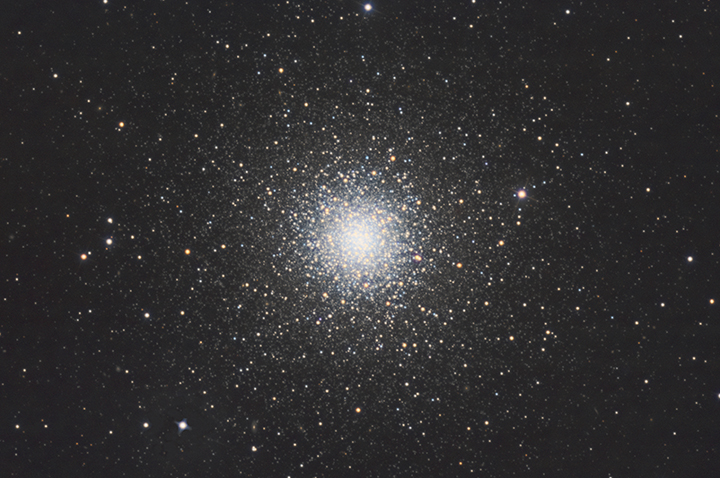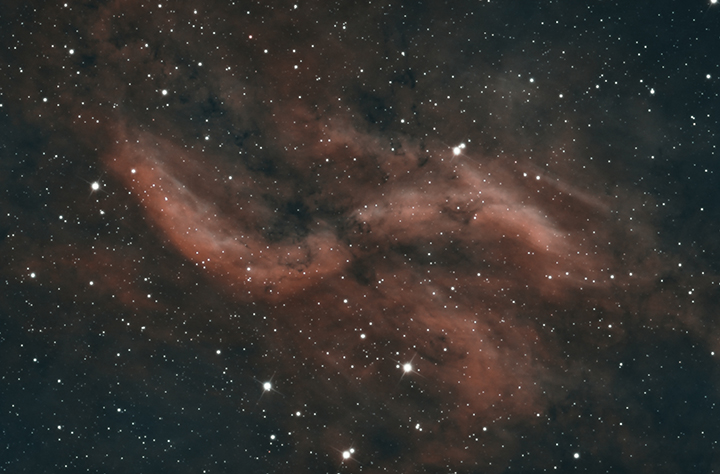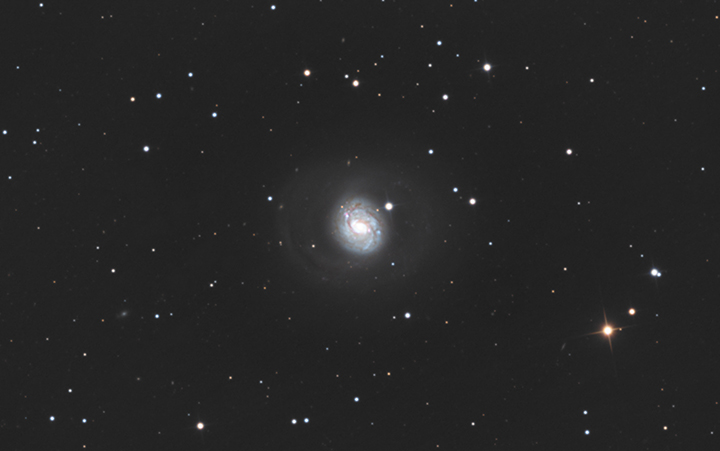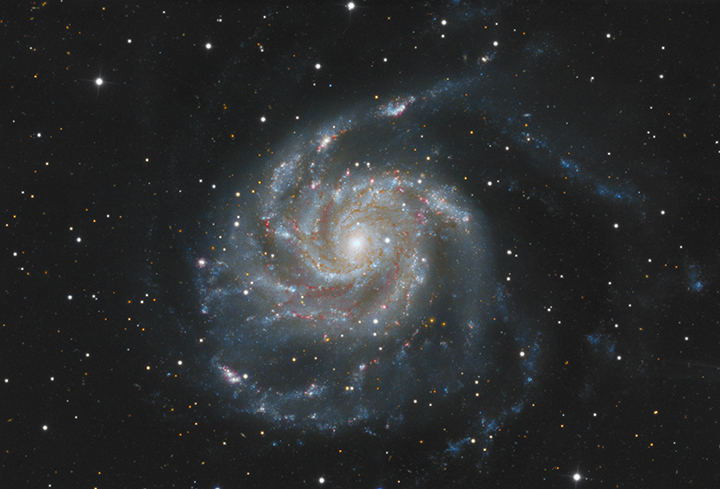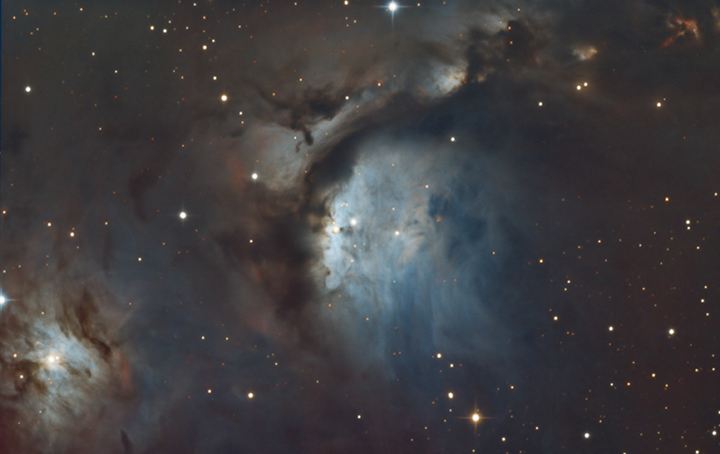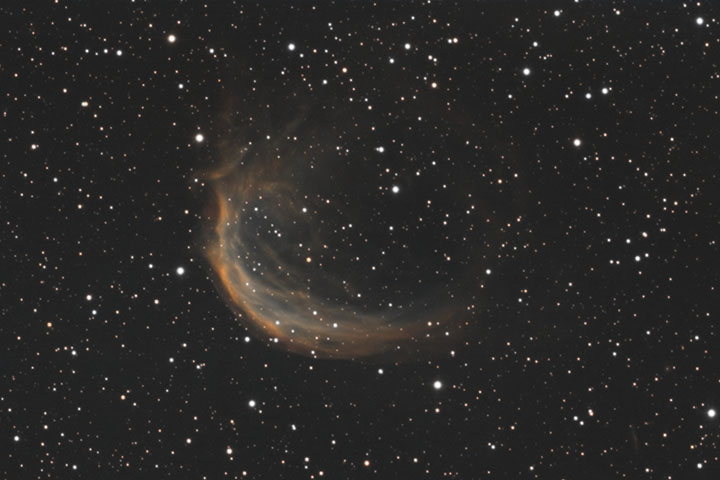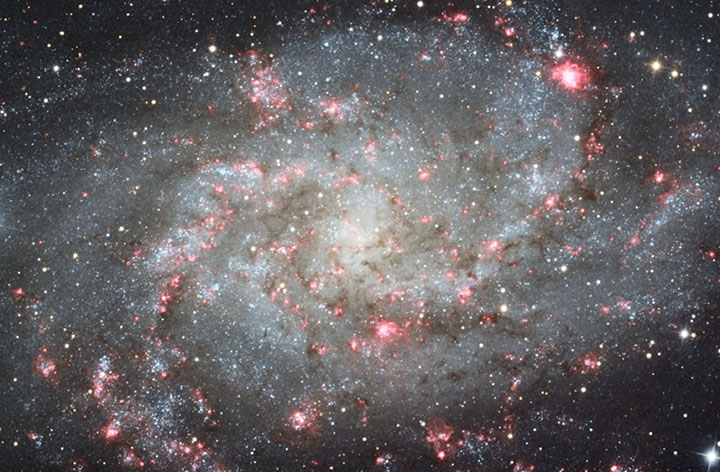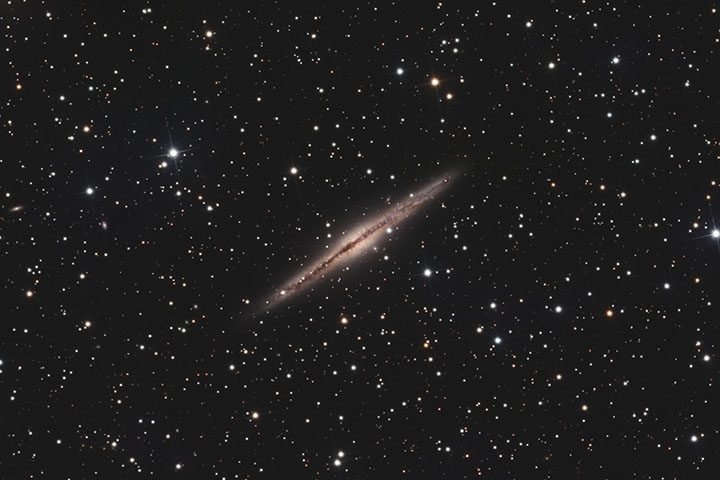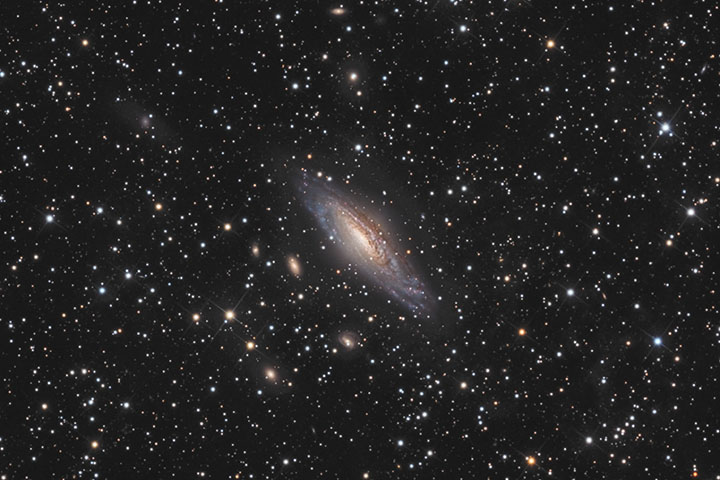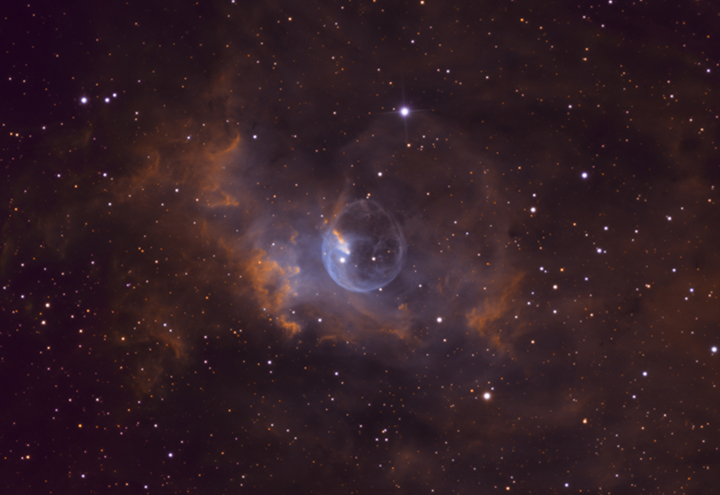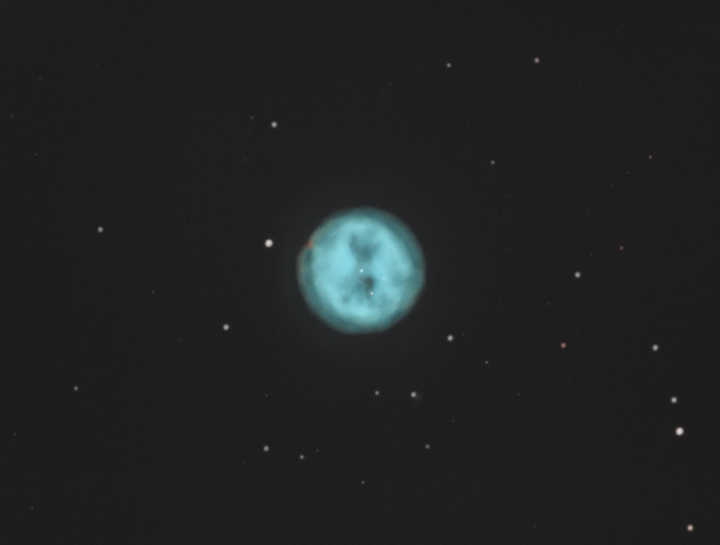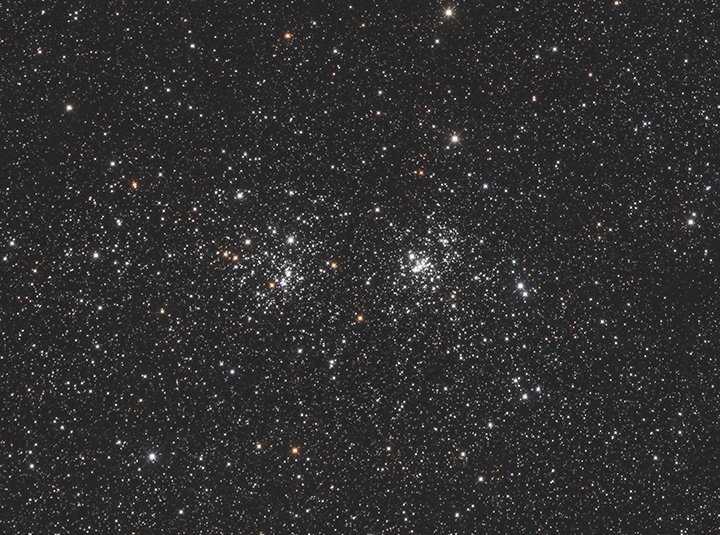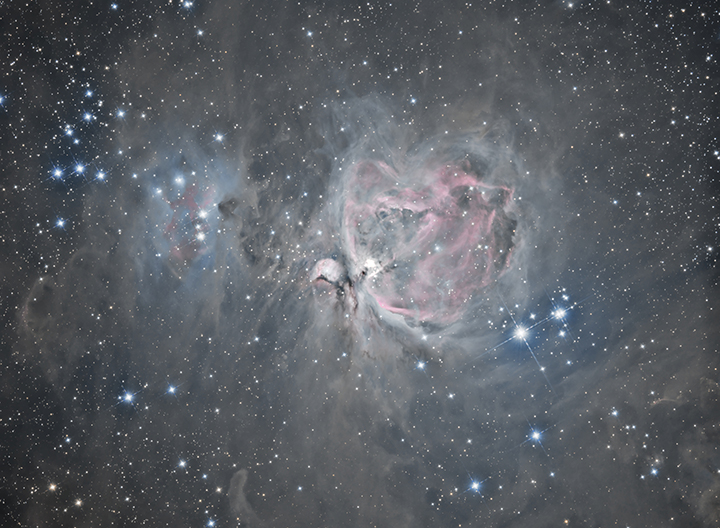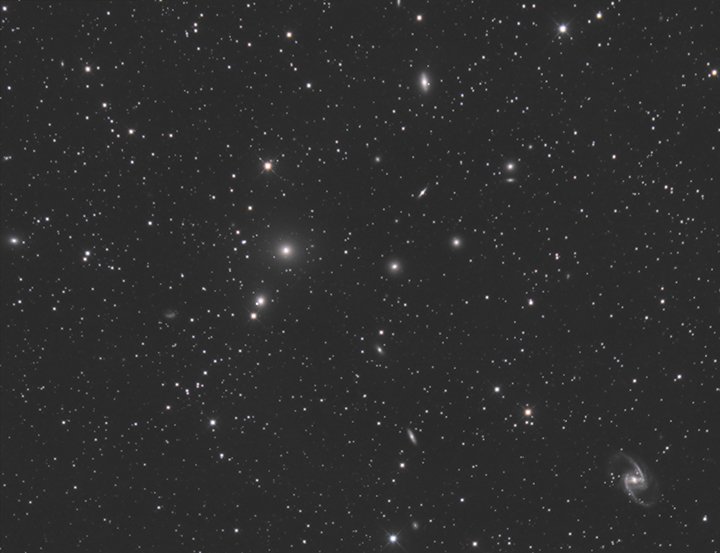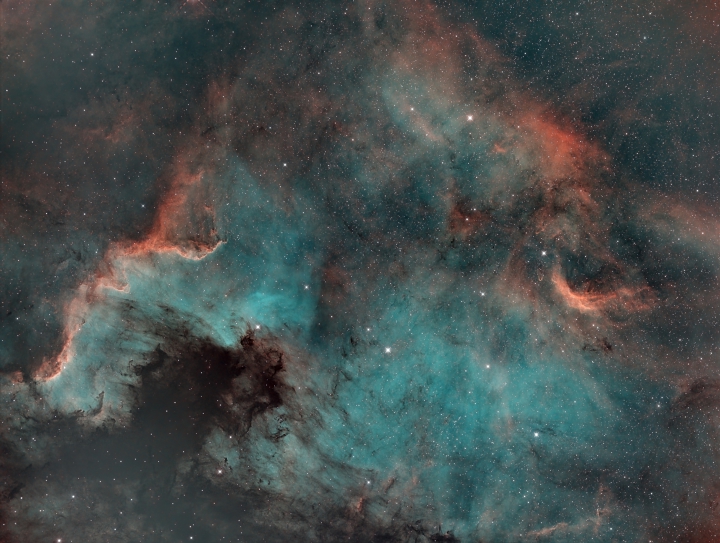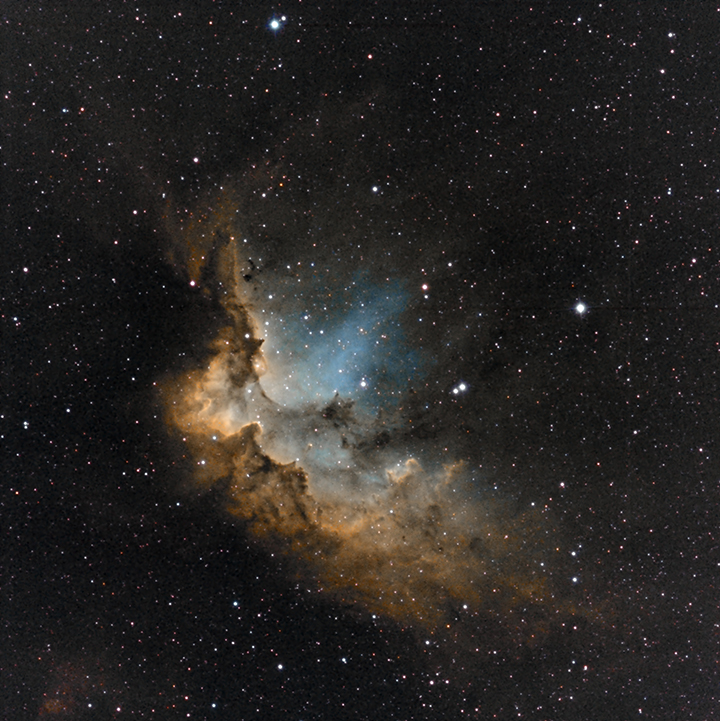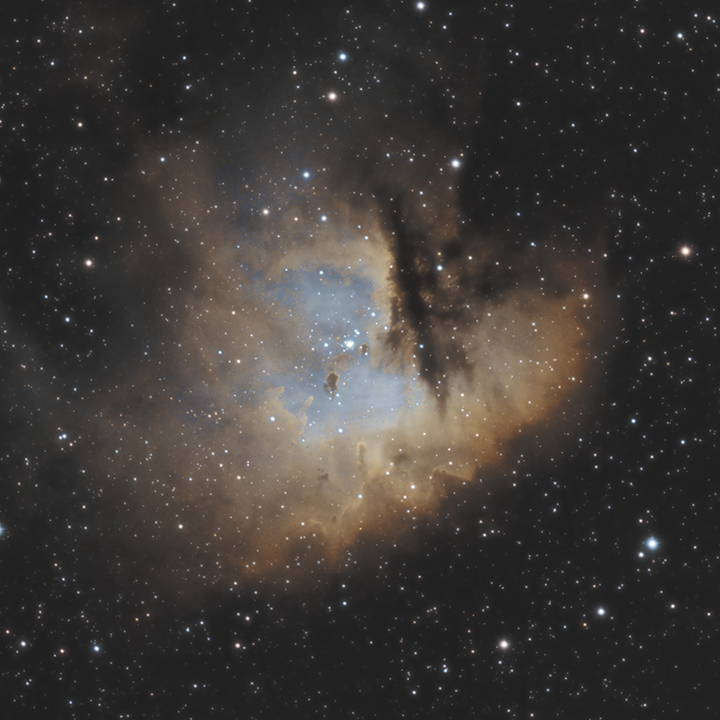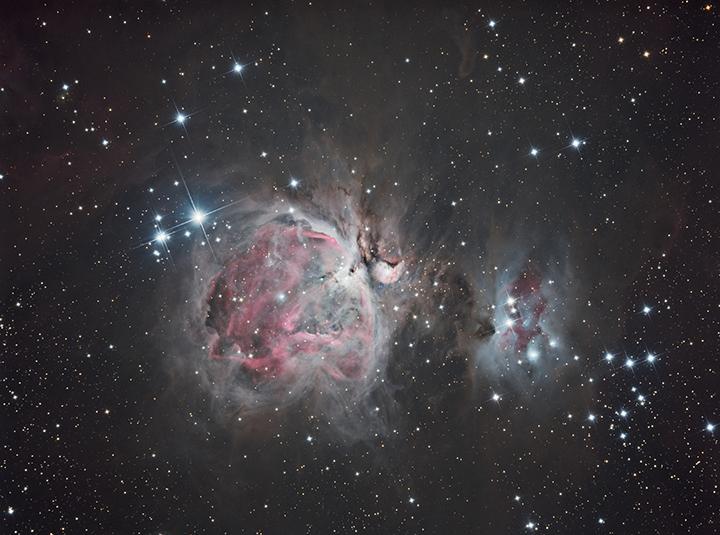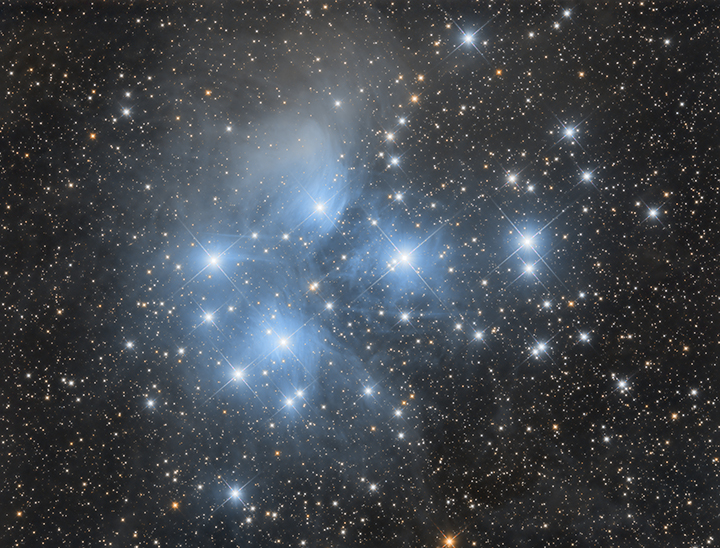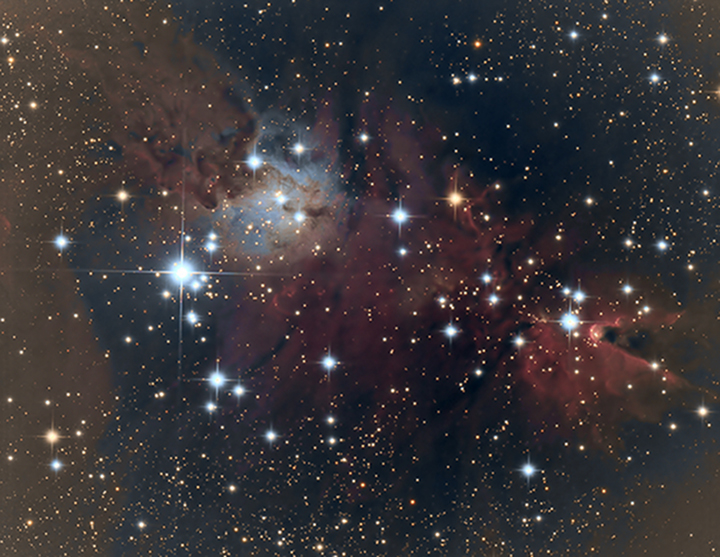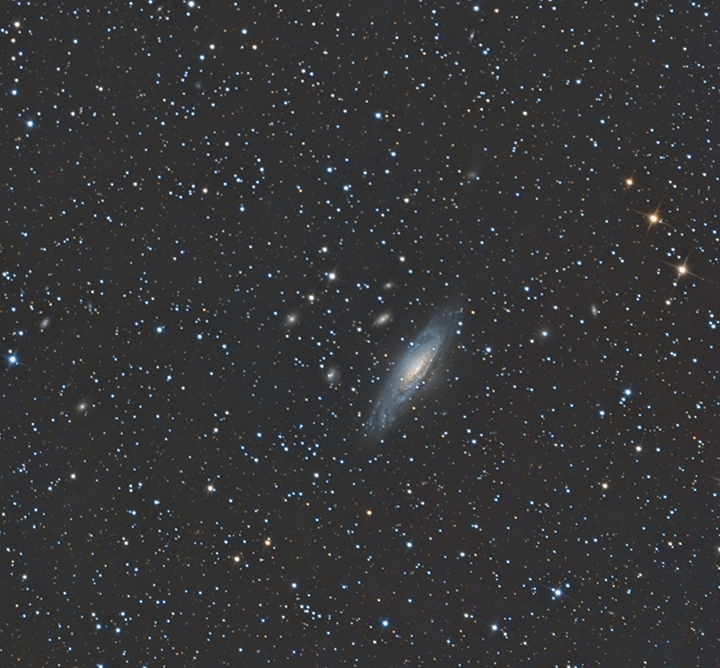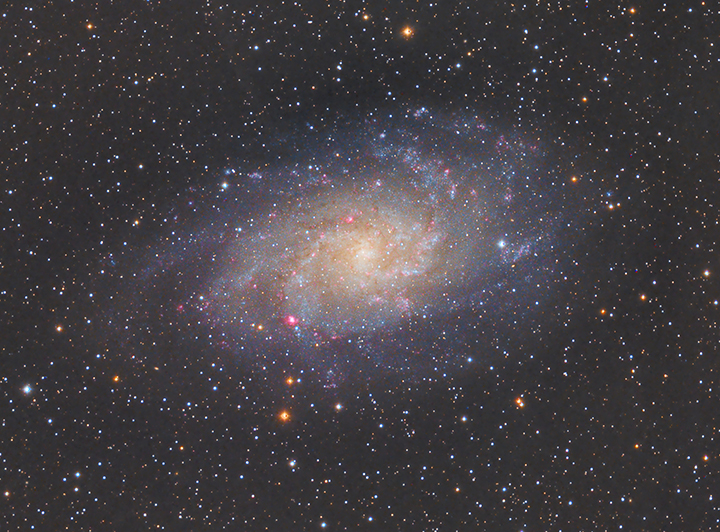Welcome
Welcome to Jim Morse Astronomy. This website will focus on my imaging, but my intent is to talk about more than just astrophotography. I may even stray beyond astronomy on occasion (with your indulgence, of course). And who knows, you may actually learn something or read something that makes you smile. I have had the pleasure to image in many locations with many different scopes, from a 12.5 inch Planewave in Oman, to a 17 inch Planewave remotely in New Mexico, to my latest set up, an FRA600 at Starfront Observatories in central Texas (Bortle 1 skies!!) here
After years of making big changes, moving from a couple of years imaging from my backyard, I think I will be doing remote imaging at Starfront Observatories for some time to come (images to follow soon).
If you are interested, you can find out about those changes here.
Latest News: - October 9, 2025
A word of warning, at least for a bit. I am in the process of updating this site but in the meantime the fixes will be piecemeal. I have now added a slew of new images of your review, and working on updates to all of the pages and some new material I am still working on. Please check back regularly to see the changes. Note that I am very pleased with some of these images and others I am sorely disappointed with. Of the latter, I will continue to try to upgrade my processing over time to improve the view for your (and my) pleasure.
[Updated October 9, 2025]
M88 - Final image from the master Virgo Cluster of galaxies, centered on M87. This was a final test of what can be done by using 3x drizzle on widefield images. Not as detailed as can be achieved with a much narrower FOV but still impressive. FRA600 w/reducer - ASI6200MM System; 28 hours of RGB imaging; Starfront Observatories, Texas; March 2025
AGC1553 - A 2 billion year lookback! By far the deepest image I have taken to date. FRA600 w/reducer - ASI6200MM System; 28 hours of RGB imaging; Starfront Observatories, Texas; March 2025
AGC1552 - A 1 billion year lookback! One of several Abell Galaxy Clusters in the larger image of the Virgo cluster. 1 Billion year lookback is impressive until you see the next one. FRA600 w/reducer - ASI6200MM System; 28 hours of RGB imaging; Starfront Observatories, Texas; March 2025
Portion of the Virgo Cluster of galaxies shown below. Most famous portion of the Virgo cluster around M87. This image and next few show what can be done by breaking down widefield images using 3x drizzle. FRA600 w/reducer - ASI6200MM System; 28 hours of RGB imaging; Starfront Observatories, Texas; March 2025
Virgo Cluster of galaxies, centered on M87. There are so many galaxies and galaxy clusters visible in this image. One of the richest galaxy clusters in the sky. FRA600 w/reducer - ASI6200MM System; 28 hours of RGB imaging; Starfront Observatories, Texas; March 2025
Beehive Cluster in Cancer. Good first test for my new FRA600 scope. You may be wondering how I am able to get star spikes when using a refactor. Because I love the look of the spikes, I had a cover 3D printed which mimics the spider veins of Newtonian telescopes. FRA600 w/reducer - ASI6200MM System; 5.5 hours of RGB imaging; Starfront Observatories, Texas; March 2025
Entire Rosette and Cone Nebulae Area in Monoceros. This 4 panel mosaic is absolutely huge and I'm not sure how the full size image will show in the website! Dust and gas and a beautiful "S" curve running through the heart of the image! e130D - ASI6200MM System; 4 panel mosaic - 54 hours of narrowband imaging; Starfront Observatories, Texas; February 2025
Veil Nebula West (NGC6960) in Cygnus. This is a close up portion of the whole Veil Nebula shown below. This was an experiment to see how close you can zoom in and keep the resolution required for an excellent image. e130D - ASI6200MM System; 24 hours of narrowband imaging; Starfront Observatories, Texas; September 2024
Orion's Belt, the Horsehead Nebula, the Flame Nebula, and so much more! What an incredible image with so much to absorb and just look at those fabulous dust clouds! What an amazing view! e130D - ASI6200MM System; 13.5 hours of narrowband imaging; Starfront Observatories, Texas; January 2025
Rosette Nebula in Monoceros. Just superb in this wide FOV! What lovely structure! e130D - ASI6200MM System; 14 hours of narrowband imaging; Starfront Observatories, Texas; January 2025
Seagull Nebula in Monoceros. Another lovely, low target but again compromised by the Tak. Will be shooting all of these with the FRA600. e130D - ASI6200MM System; 25 hours of narrowband imaging; Starfront Observatories, Texas; December 2024
Simeis 147 SNR in Taurus. Two panel mosaic of the "Spaghetti" Nebula. Amazing structure but image that told me I wanted to update from the Tak. Weird circular banding that was hard to overcome in processing. e130D - ASI6200MM System; 2 panel mosaic - 30 hours of narrowband imaging; Starfront Observatories, Texas; January 2025
WitchHead Nebula in Eridanus. Great low target. It's for images like this that I moved my current set up to SFO! e130D - ASI6200MM System; 2 panel mosaic - 22 hours of RGB imaging; Starfront Observatories, Texas; December 2024
M45 Area in Taurus. Another fabulous target just made for this wide FOV! I love dust!! e130D - ASI6200MM System; 7.5 hours of RGB imaging; Starfront Observatories, Texas; November 2024
Perseus Molecular Cloud. A dream target. It's for images like this that I moved my current set up to SFO! e130D - ASI6200MM System; 16 hours of RGB imaging; Starfront Observatories, Texas; November 2024
NGC1499 group in Pegasus better known as the California Nebula. Another wonderful target. Really happy I was able to pull out the OIII region in ther heart of the Nebula! e130D - ASI6200MM System; 20 hours of narrowband and RGB imaging; Starfront Observatories, Texas; November 2024
M31 group in Andromeda. Amazing target. This galaxy group is a favorite and once again, nice to finally image this with a wide FOV! The image is clear enough that if you click on the larger image, you should be able to find M31's own globulur clusters with a sufficiently detailed map. Using drizzle processing with my set up allows really superb detail on a huge FOV! e130D - ASI6200MM System; 24 hours of RGB and Ha imaging; Starfront Observatories, Texas; October 2024
IC59 and IC63 in Cassiopeia. Known as the Ghosts of Cassiopeia. Very happy with the processing. e130D - ASI6200MM System; 34 hours of narrowband and RGB imaging; Starfront Observatories, Texas; October 2024
IC1805 in Cassiopeia. Lovely target, better known as the Heart Nebula. First image using the ASI6200. Really enjoy the coloring. e130D - ASI6200MM System; 34 hours of narrowband and RGB imaging; Starfront Observatories, Texas; October 2024
M33 in Triangulum. A fabulous target and I have finally imaged it with a sufficiently wide FOV. Another Astrobin Top Pick nomination! e130D - ASI2600MM System; 42 hours of RGB and Ha imaging; Starfront Observatories, Texas; September 2024
Stunning Veil Nebula in full as a two panel mosaic. A truly great target in Cygnus! First Image at Starfront Observatories. e130D - ASI2600MM System; 54 hours of narrowband imaging; Starfront Observatories, Texas; September 2024
LDN1217 in Cepheus. A target type I want to explore thoroughly now that I have a wide FOV under Bortle 1 skies. First image from Starfront Observatories. Nominated as an Astrobin Top Pick! e130D - ASI2600MM System; 57 hours of LRGB and Ha imaging; Starfront Observatories, Texas; February 2024
M13 widefield in Hercules. A fabulous target in any format. Best Globular Cluster in Northern Skies! e130D - ASI2600MM System
NGC7331 group in Pegasus. A fabulous target. This galaxy group is a favorite! CDK17 – STXL11002 System
Sh2-155 in Cepheus. Fine bit of narrowband nebulosity. CDK17 – STXL11002 System
NGC891 in Andromeda. Another oft photographed image in the night sky. CDK17 – STXL11002 System
M42 and M43 in Orion. One of the most photographed images in the sky and yet irresistible. This 2 panel mosaic is a favorite! CDK17 – STXL11002 System
MBM30 in Ursa Major. MBM30 is my first foray into rarely imaged interstellar dust clouds not listed in the major databases. A new type of target! FRA600 - ASI2600MM System
M104 in Virgo. The "Sombrero Galaxy" is one of the finest edge on targets in the sky and this one was nominated as an Astrobin “Top Pick”. A favorite! CDK17 – STXL6303E System
IC1613 in Cetus. Love the Milky Way's dwarf galaxy companions and this image was nominated as an Astrobin “Top Pick”. A favorite type of target! CDK17 – STXL11002 System
NGC2264 in Monoceros. First image using my FRA600, using RGBHa. Nice image of Cone Nebula area. FRA600 - ASI2600MM System
NGC2158 in Gemini. M35's little friend, rarely imaged on its own. I really enjoy open clusters. CDK17 – STXL6303E System
M81 area in Ursa Major with IFN. A new type of imaging I am anxious to explore further. The dust perminating the instellar regions is just fascinating. A new start! e130D - ASI2600MM System
Thor's Helmet in Canis Major. Another lovely image and one of only a handful of images from my Aspen experiment that I was able to successfully process. An excellent example of a superb narrowband target! CDK17 – Aspen 16803 System
vdB9 in Cassiopeia. Just lovely and nominated as an Astrobin “Top Pick”. A favorite! CDK17 – Aspen 16803 System
Lots going on here, with both M36 and M38 open clusters and the Flame and tadpole nebulae. Another great winter target. ACL200 - ASI2600MC with Radian Ultra Quadband filter
Widefield of the M35 Area showing M35 (and its little brother NGC2158) and the Monkeyhead and Jellyfish Nebulae. Not thrilled with the processing on this one but plenty of learnings. ACL200 - ASI2600MC with Radian Ultra Quadband filter
Sh2-240 Supernova remnant, also known as Simeis 147 and the Spaghetti Nebula. Another great winter target, but extremely faint and so requires a lot of data to create a decent image. ACL200 - ASI2600MC with Radian Ultra Quadband filter
M94. A wonderful, unique galaxy with a beautiful ring structure. Nominated as an Astrobin "Top Pick", though not my best processing effort. Had to push the stretch too much to bring out the outer ring. CDK17 – SBIG 6303E
M105 Group. Another trio in Leo but not as interesting as others, though again a host of small galaxies in the background. CDK17 – SBIG 6303E
Widefield of the NGC2264 area - Cone Nebula and lots more. My first widefield image using my new ACL200 scope which, when combined with the ASI2600MC, has a 6.7 by 4.5 degree FOV. I am using the ASI2600MC with the Radian Ultra Quadband filter. Excellent winter target at all scales, but this FOV allows you to view the larger structures in this area. Need to shoot the Rosette and combine into a large mosaic. ACL200 - ASI2600MC with Radian Ultra Quadband filter
NGC4567 and NGC4568 - the Butterfly Galaxies. Another lovely site with a field of small galaxies to explore. Sits in the heart of the Virgo Cluster of galaxies. Another good processing effort. Getting pretty good at this. From old data taken at NMSkies. CDK17 – SBIG 6303E
NGC4565 - the Needle Galaxy. One of the finest galaxies in the sky and if you examine the larger versions, the field is just exploding with tiny background galaxies. Very happy with this processing effort! From old data taken at NMSkies. CDK17 – SBIG 6303E
IC405 and IC410, Flame and Tadpole Nebulae. Fabulous winter target full of wonderful sites, including the tadpoles in IC410. e130D - ASI2600MM
M65, M66 and NGC3628, the Leo Galaxy Trio. Great Spring target and, as an aside, the first Galaxies I was able to observe (though not without a host of frustrations) when I started visual astronomy. e130D - ASI2600MM
M35 and its companion star cluster NGC2168. In my mind, one of the best cluster duos, topped only by the Perseus Double Cluster. The comparison between the two is fascinating. M35 is around 100 million years old and 2800 light years away. NGC2158 is much older at 2 billion years and is almost 15,000 light years distant, hence its apparent much smaller size. e130D - ASI2600MM
NGC1499, California Nebula. Fine late summer target and second image since starting up again in my backyard in New Buffalo Michigan. Also, my first narrowband CMOS image, using my ASI2600MM e130D - ASI2600MM
M45, the Pleiades or Seven Sisters. Lovely target and first image since starting up again with my backyard imaging at my home in New Buffalo Michigan. Also, my first CMOS image, using an ASI2600MM e130D - ASI2600MM
M63, the Sunflower Galaxy. Just lovely and nominated as an Astrobin “Top Pick”. A much better processing effort compared to the one below and a favorite! CDK17 – SBIG 6303E
M13, the Great Hercules Globular Cluster. First time I have successfully captured the beauty of a GC. CDK17 – SBIG 6303E
Lovely galaxy in UMa. Processing needs work; colors right but not contrast. CDK17 – SBIG 6303E
NGC3718 and friends (Arp 214). Beautiful galaxy group in Ursa Major. Not my best effort, but not terrible and lots of background galaxies to explore. CDK17 – SBIG 6303E
NGC6946 – the Fireworks Galaxy in Cygnus. Just lovely and nominated as an Astrobin “Top Pick”. A favorite! CDK17 – Aspen 16803 System
Reflection Nebula NGC 7129 in Cepheus along with some nice dark nebulosity in the winter Milky Way. Generally happy with this one, but again you can see on close inspection some vertical banding showing up in the data from the Aspen. CDK17 – Aspen 16803 and FLI 16803 Systems
The famed Double Cluster (NGC869 and NGC884) in Perseus, this time as a two-panel mosaic. A lovely target. Generally happy with the processing on this one, especially since my previous mosaic efforts have not been great. CDK17 – Apogee Aspen 16803 and FLI Microline 16803 Systems
B361 and friends (IC1369 and PK089-00.1) in Cygnus. Not my best effort, but lots going on in this field. CDK17 – Aspen 16803 and FLI Microline 16803 Systems
B226 and portions of M36 in Auriga. A fun, easy target with some small patches of dark nebulae. CDK17 – Aspen 16803 and FLI Microline 16803 Systems
Lovely shot of Abell 21 (Sh2-274) in Gemini. This is my best effort with this faint target, successfully capturing lots of detail, including some very faint red nebulosity surrounding the target. CDK17 - SBIG FLI Microline 16803
M81 in Ursa Major. Very happy with this fine shot of Bode’s Galaxy and its little friend Holmberg IX, as well as elements of the surrounding IFN. Processing earned an Astrobin “Top Pick”. CDK17 – Aspen 16803 and FLI Microline 16803 System
The Iris reflection nebula (NGC7023) in Cepheus. A nice effort on a lovely target. Better than any of my earlier attempts to image the Iris, in part because of using the correct FOV. CDK17 – Aspen 16803 and FLI Microline 16803 System
B365 and surrounding nebulosity in Cepheus. Nice winter Milky Way dark nebula. CDK17 – Aspen 16803 and FLI Microline 16803 Systems
Cocoon Nebula in Cygnus (IC5146 and B168). Nice target but my FOV too small to capture anything other than the heart of the Nebula, missing the associated dark nebulosity stream. This was my one processed image trying out an SBIG STXL 11002 as a possible replacement for the Aspen. This data was fine, but thereafter the 11002 chip went wacky with tons of weird vertical banding and I had to look elsewhere. CDK17 – SBIG STXL 11002 System
IC59 and IC63 (vdB5) in Cassiopeia. Not thrilled with the processing on this one for two reasons, not properly centered and the myriad stars played havoc. Only an ok effort. CDK17 – Aspen 16803 System
B29 in Auriga – a fine bit of dark nebulosity in the winter Milky Way. Generally happy with this one, but you can see on close inspection some vertical banding showing up in the data from the Aspen and it only gets worse from here. CDK17 – Aspen 16803 and FLI 16803 Systems
M101 in Ursa Major – The Pinwheel Galaxy and the Queen of the Northern Skies! Finally, a FOV worthy of this wonderful target. Generally happy with the processing on this one. But this image also marks a turn a seriously regret, abandoning the slightly flawed FLI for a deeply flawed Apogee Aspen. CDK17 – Apogee Aspen 16803 System
The massive AGC2151 in Hercules. I generally do better on Galaxy Clusters but this one is still a joy to investigate in detail. CDK17 – FLI Microline 16803 System
B143 in Aquila – the top half of Barnard’s E. Again, just love dark nebulae. CDK17 – FLI Microline 16803 System
B142 in Aquila, the bottom half of Barnard’s E. I am fascinated by dark nebulae, especially those running through the Milky Way. This one is no exception. CDK17 - SBIG FLI Microline 16803
M33 in Triangulum. Another effort to capture the glory of M33 and this is one of my better efforts, but any FOV less that 2 degrees square is just too small. CDK17 – FLI Microline 16803 System
NGC7331 Group and Stephan’s Quintet in Pegasus. A superb effort on a superb target. How this didn’t get nominated as a Top Pick is beyond me Everything about this image is fantastic and it and others like it are the reason I love this hobby as much as I do. CDK17 – FLI Microline 16803 System
M103 in Cassiopeia. Compared to the version I took with the 6303E, this version is a disappointment. CDK17 – FLI Microline 16803 System
NGC281 - The Pacman Nebula, in Cassiopeia. This is a tough target to process well and, for the first time, I nailed it! A fine processing effort on a superb target. Lots of detail and good colors in this Hubble Palette image. CDK17 – FLI Microline 16803 System
NGC891 – the UFO Galaxy, in Andromeda. I love this effort, though again, it won no awards. Excellent detail and colors and has a vibrancy about it. And, like most of these fields, the background is awash with tiny galaxies, many of them little spirals. It is with targets like this that my imaging system really shines. CDK17 – FLI Microline 16803 System
NGC896 with stars removed. This is the same image as the one immediately below, except that I applied the StarNet process in PixInsight to remove all the stars. Interesting experiment. CDK17 – FLI Microline 16803 System
NGC896 – The Fish Head Nebula (and Hook) in Cassiopeia. Part of the Heart Nebula complex. Not a bad processing effort and some good detail, but could be better. CDK17 – FLI Microline 16803 System
AGC426 in Perseus – one of the richest galaxy clusters in the sky. A nice processing effort. Be sure to zoom in on the central galaxy and the red streamers coming off its core. CDK17 – FLI Microline 16803 System
IC342 – a jewel in Camelopardalis! I have gushed about my love for this galaxy below and love it even more in the 16803 FOV. I consider this one of my best processing efforts and it was nominated as an Astrobin "Top Pick". CDK17 – FLI Microline 16803 System
Sh2-094 is a very faint nebula that is part of a supernova remnant that includes Sh2-091 and Sh2-096, located in the heart of the northern Milky Way in Cygnus. This was a tough narrowband image and I am reasonably happy with the processing. CDK17 – FLI Microline 16803 System
NGC7380 – A Fine nebula target in Cepheus. This is a hard image to process well, so I am generally happy with the result. CDK17 - FLI Microline 16803 System
Crescent Nebula in Cygnus. As disappointed as I was with the processing of the Tulip below, this is just wonderful. This is actually a two color image, using only Ha and OIII since the SII signal was so weak. The blue OIII gas that sits atop the Ha nebulosity is a real joy. &npsp; But here we start to see the problems with the 16803 start to creep in. If you look carefully you can see a couple of bad lines in the bottom center of the image that I have tried to fudge. CDK17 - FLI Microline 16803 System
The Tulip Nebula in Cygnus. Lovely target that I have botched badly. Processing is a mess. CDK17 – FLI Microline 16803 System
LDN673 – an intricate tangle of dark nebulosity in Aquila. This marks a major change from my previous images, with a return to a 16803 chip. While much happier with the FOV, this chip has been snake bit much of the time, though this first effort was generally successful. CDK17 – FLI Microline 16803 System
M95 in Leo – a classic barred spiral galaxy. Not perfect (a bit too much noise in the background that I need to go back and fix someday) but a beautiful target and a reasonably good processing job on the galaxy itself and it was nominated as an Astrobin “Top Pick”. Again, the background overflows with delights. CDK17 - SBIG 6303E System
NGC2841 in Ursa Major. A nice galaxy with lots of background treats to explore. Just not as happy with this one as with the last. CDK17 - SBIG 6303E System
NGC5907 – the Splinter Galaxy in Draco. Unlike my effort with M33, this one is superbly framed. This won no recognition, but I consider it fantastic. Not only is the galaxy itself well imaged but the background is a feast of tiny galaxies and galaxy clusters, especially the string of galaxies to the upper right. A joy to my eyes and one of my very best! CDK17 - SBIG 6303E System
M57 – the famed Ring Nebula in Lyra. As with many planetary nebulae, the range of brightnesses between the bright core, intense ring, and the very faint extension nebulosity makes this a difficult target to get right. I largely failed. CDK17 - SBIG 6303E System
M51 Up Close - One of the most iconic galaxies in the sky located in Canes Venatici. This is imaged so often that it takes a superb effort to qualify for praise. While this effort isn’t awful, it doesn’t rise to the occasion. CDK17 - SBIG 6303E System
M5 – another shot of this fine globular cluster in Serpens. This was nominated as an Astrobin “Top Pick”. This is a better effort, but I still have not solved the processing challenges on GBs. CDK17 - SBIG 6303E System
Near full Moon. This one is a stack of over 100 subs. Generally happy with result, especially the traces of color, but unhappy with the couple of burned out craters. Canon 6D – 300mm f4 lens System
4 day old Moon. Looking forward to adding some planetary imaging to the mix as a part of the changes I am making. This was shot with my Canon 6D and a 300mm f4 lens and is a stack of over 300 subs. Generally happy with result. Canon 6D – 300mm f4 lens System
Draco Drawf Galaxy – I just love this class of galaxy. Only marginally happy with the processing. CDK17 - SBIG 6303E System
Abell 21, also known as Sh2-274, is a nice planetary nebula in Gemini. Faint target so generally happy with the processing. CDK17 - SBIG 6303E System
Images as of March 19, 2021
The Monkey Head Nebula - My first, but hopefully not last Astrobin "Image of the Day!". How could I not be happy with this one. One of my very best efforts. CDK17 - SBIG 6303E System
The Cat's Eye Planetary Nebula. These are tough targets to image well. Not thrilled but not overly disappointed either and like the little galaxy to the lower left. CDK17 - SBIG 6303E System
Leo A - Another Fine dwarf galaxy orbiting the Milky Way. Very pleased with this effort and it earned an Astrobin "Top Pick" nomination. Another background alive with tiny galaxies and galaxy groups. CDK17 - SBIG 6303E System
M92 - The other Hercules Globular. I just love Globular Clusters but do not think I have ever adequately captured an image of one. This is no exception. CDK17 - SBIG 6303E System
Pickering's Triangle. - A fascinating and underappreciated part of the Veil Nebula SNR. Very pleased with this processing effort. Excellent coloring in this Hubble Palette image. CDK17 - SBIG 6303E System
Sh2-101 - The Tulip Nebula. A disappointing effort on what should be an excellent target. CDK17 - SBIG 6303E System
vdB142 - The Elephant Trunk. I consider this one of my finest efforts, which is why I chose it for my masthead. Fantastic coloring and detail in this Hubble Palette image. CDK17 - SBIG 6303E System
NGC4038 and 4039 - The Antennae. A nice processing effort on a superb target. I love the wispy tails of the two galaxies and the coloring is good. CDK17 - SBIG 6303E System
M103 - A Cassiopeia jewel. Good processing effort. Good star coloring and has a vibrancy about it. CDK17 - SBIG 6303E System
M36 - Simple, but lovely. An adequate processing effort, but not as good as M103, above. OK star colors but needs a darker background. CDK17 - SBIG 6303E System
AGC426 A nice processing effort and one of my favorite subjects to image. I simply love exploring all of the tiny galaxies laced throughout the background, hiding admist the more obvious foreground ones. Good color solution. CDK17 - SBIG 6303E System
NGC281 - A deep look. A nice processing effort and it was selected as an Astrobin "Top Pick". Good coloring in this Hubble Palette image. CDK17 - SBIG 6303E System
NGC2903 - The "Missing Messier". I consider this one of my best processing efforts and it was selected as an Astrobin "Top Pick". The background has a wealth of small galaxies to explore. CDK17 - SBIG 6303E System
NGC1491 - Another excellent reflcetion nebula, sometimes referred to as the "dinosaur foot" due to the shape of the blue reflection area. Only marginally happy with the processing though it shows good detail. CDK17 - SBIG 6303E System
NGC2683 - Fine, near-edge on galaxy. Quite happy with the processing and it received an Astrobin "Top Pick" nomination. Lots of good detail in the dust lanes and it has a nice little companion galaxy near the upper right. CDK17 - SBIG 6303E System
NGC2403 - Fine open faced spiral galaxy. Only marginally happy with the processing. This is a tough one due to bright stars mixed in with galaxy detail CDK17 - SBIG 6303E System
IC342 - A superb galaxy that would be a master showpiece if not obscured by winter Milky Way dust. Very happy with the processing. I feel I accurately captured the red tint caused by all the obscuring dust. I just love this galaxy. CDK17 - SBIG 6303E System
Iris Nebula - One of the best reflection nebulae in the sky. Only marginally happy with the processing. CDK17 - SBIG 6303E System
NGC2392 - "Eskimo" Nebula. Had to really zoom in on this image since it is so small and overall quite happy with the processing, showing excellent detail and good color for its size. CDK17 - SBIG 6303E System
Abell 31 - Extremely faint Planetary Nebula. Very weak signal so difficult to process. CDK17 - SBIG 6303E System
IC410 - Closeup of Tadpoles. Reasonably happy with the processing. CDK17 - SBIG 6303E System
AGC1367 - Superbly dense galaxy cluster. Only marginally happy with the processing but it did receive an Astrobin "Top Pick" nomination. The background is alive with galaxies! CDK17 - SBIG 6303E System
MNGC896 - the Fish head Nebula. Marginally happy with the processing. CDK17 - SBIG 6303E System
M16 Close-up - One of the most famous sites in the sky. Very happy with the processing (using the Hubble image as my benchmark) and it was selected as an Astrobin "Top Pick". CDK17 - SBIG 6303E System
M82 - Best irregular galaxy in the sky. Only marginally happy with the processing but it was selected as an Astrobin "Top Pick". CDK17 - SBIG 6303E System
M5 - Lovely Globular Cluster but my processing does not do it justice. Astrobin "Top Pick" nomination CDK17 - SBIG 6303E System
Perseus Double Cluster - Four panel mosaic. Very disappointing result. This really does better with a wide field imaging rig. CDK17 - SBIG 6303E System
M1 - Crab Nebula - Beautiful tendrils of a Supernova remnant. Happy with the processing. CDK17 - SBIG 6303E System
Stephen's Quintet - A joy to behold. This is a closeup of the same group that is captured above as part of the expanded NGC7331 environs. As with most galaxy fields, I love exploring the rich background for tiny galaxies and galaxy groups hidden among the stars. Happy with the processing. CDK17 - SBIG 6303E System
NGC 6822 - Barnard's Galaxy - A classic among the host of dwarf galaxies surrounding the Milky Way - One of my favorites - Glorious star colors to be seen throughout the expanded version. I love exploring all the details, especially the star forming HII regions to the left and upper left of the Galaxy! Reasonably good processing. CDK17 - SBIG 6303E System
M3 - Superb Globular Cluster. Disappointing processing. Always struggle with Globular Clusters and need to hone my skills. CDK17 - SBIG 6303E System
Propeller Nebula - Not happy at all with the result on this one. Problem of perspective as much as anything. Simply too small a FOV to treat properly. CDK17 - SBIG 6303E System
M77 - A fine galaxy where the processing had to overcome serious flaws in the data acquisition. Given what I started with, I am quite happy with the result. CDK17 - SBIG 6303E System
New Images as of September 27, 2017.
M101 - Queen of the Spiral Galaxies CDK17 - SBIG 6303E System
AGC2151 - Rich Cluster of Hundreds of Galaxies CDK17 - SBIG 6303E System
M65 and M66 - Part of Leo Trio. Hate the coloring in this image. CDK17 - SBIG 6303E System
NGC 2775 - disappointing coloring. CDK17 - SBIG 6303E System
M78 - NGC 2068 - need to work on contrast for better definition. CDK17 - SBIG 6303E System
NGC 3628 - Part of the Leo Trio. Background a bit too bright. CDK17 - SBIG 6303E System
NGC 1530 - actually reasonably pleased wityh this result since very weak data. CDK17 - SBIG 6303E System
Dark Nebulae in the Western Rosette Nebula. I love this image and am very pleased with the processing. CDK17 - SBIG 6303E System
NGC772 - Fiddlehead Galaxy - My first image to be awarded an Astrobin "Top Pick" and one of my best processing efforts. CDK17 - SBIG 6303E System
Helix Nebula - Rework of an older image set - Astrobin "Top Pick" nomination. CDK12.5 - SBIG 6303E System
Sh2-188 CDK17 - SBIG 6303E System
Thor's Helmet - NGC2359 - Astrobin "Top Pick" nomination. CDK17 - SBIG 6303E System
M76 - Little Dumbbell CDK17 - SBIG 6303E System
Core of IC410 - Tadpoles in Space! CDK17 - SBIG 6303E System
Heart of M33 - Pinwheel Galaxy. My first image with the CDK17. Beautiful detail. CDK17 - SBIG 6303E System
NGC 891 - Astrobin "top Pick" nomination CDK12.5 - SBIG 6303E System
Deerlick Group - NGC 7331 CDK12.5 - SBIG 6303E System
Bubble Nebula - NGC 7635 CDK12.5 - SBIG 6303E System
M13 CDK12.5 - SBIG 6303E System
September 2016 Image Set
M27 in two color narrowband. Another beauty! Love the colors, the delicate wings and the detail. CDK12.5 - SBIG 6303E System
NGC6888 in narrowband - by a large measure, my best ever. Beautifully round, focused stars and the delicate OIII blue layer is incredible and something I have not seen in other images. CDK12.5 - SBIG 6303E System
M16 in Narrowband - Starting to get there. First image with the CDK12.5 - SBIG 6303E System, which includes a built-in filterwheel and AOX adaptive optics unit, along with an Optec Rotator
M3 - Final "test" image - good except for burned out stars in center in GB. CDK12.5 - STT8300
M63 - Good but off center due to guide star so required too much zooming to center. CDK12.5 - STT8300
M97 in narrowband - Another early effort. CDK12.5 - STT8300
M104 - First image from NMSkies and basis of new masthead. CDK12.5 - STT8300 - Note these first images were with my STT8300 instead of my new 6303 system which was in the shop to work out some early issues.
Older Images
IC434 Region (including Horsehead and Flame Nebulae - compare to version in Older Gallery)
Perseus Double Cluster (compare to version in Older Gallery)
M42 Deep Field (enhanced to hightlight dust and nebulosity surrounding M42/43 - Compare to "standard" M42 image below)
Fornax Galaxy Cluster (NGC1365 bottom right)
Veil Nebula West NB (NGC 6960 and Pickerings Triangle)
NGC 7000NB (North America Nebula) - STF8300 and Takahashi e130D
M8 - STF8300 and Takahashi e130D
M74 - CDK12.5 and F16M
IC1396 Narrowband
Veil Nebula Narrowband
Recently processed images taken with STF8300 and Canon lenses. They are far from perfect (just look at the field rotation on the edges, yuck). But they are fun images nontheless. I hope to take more (and with much better technique) in the future.
NGC 7380 Narrowband
NGC 281 Narrowband
Narrowband images taken with F16M and CDK12.5.
M42
Pleiades
Above images are from my new combination, an SBIG STF8300 and a Takahashi e130D Astrograph. The e130D is very fast, at f3.3, and an elegant piece of imaging equipment with a FOV of 2.4 x 1.8 degrees.
NGC 2264 (Christmas Tree Cluster and Cone Nebula)
M81 and M82 (Supernova in M82)
M51
NGC 7331 Group
Above images taken with an Apogee Alta F16M on a Planewave CDK12.5. The image train also includes an Astrodon Monster MOAG with an STi autoguider and a Pyxis Rotator. Mount is a Software Bisque Paramount MX. Each image is made up of 12 to 15 hours worth of 10 minute red, green, and blue subframes. Filters are Astrodon Gen2 filters. Images were captured using MaximDL. All calibration, stacking, and processing was done in PixInsight.
Orion and environs
Above image taken with an SBIG STF8300 and a 35mm Canon lens. The image is made up of 90 2 minute subframes, 30 each in red, green, and blue. Processed in PixInsight
M33
Old image reprocessed in PixInsight
(Note: Click on images for full sized version)
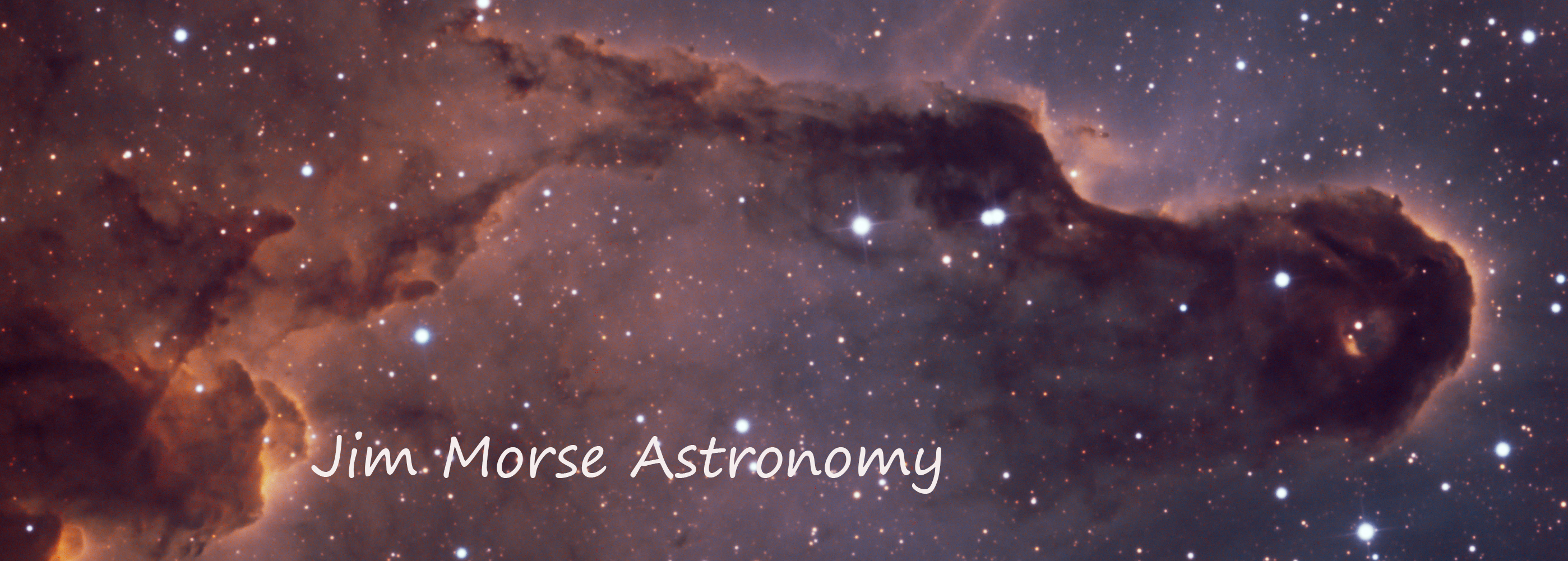







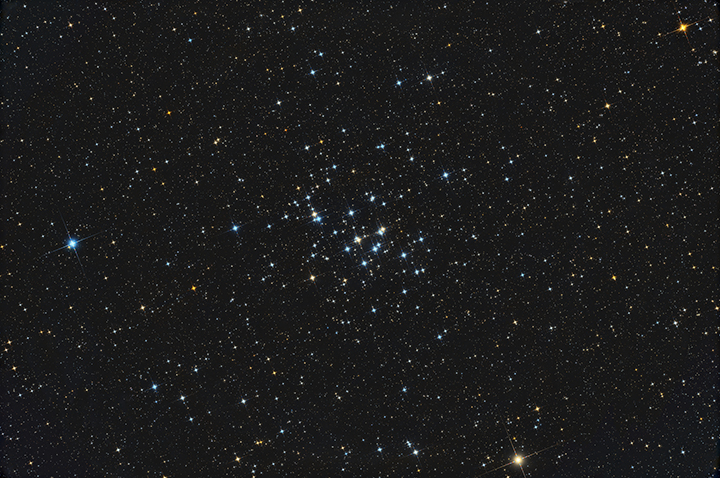
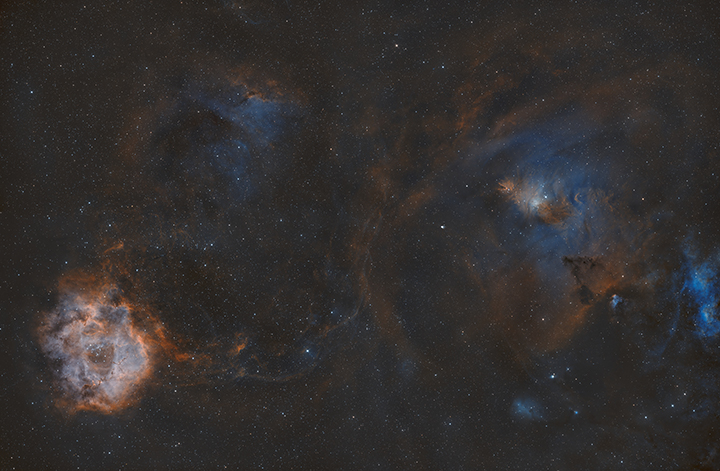



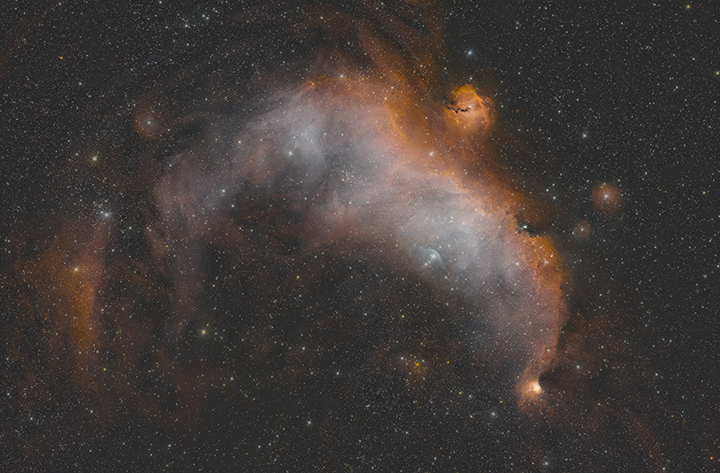


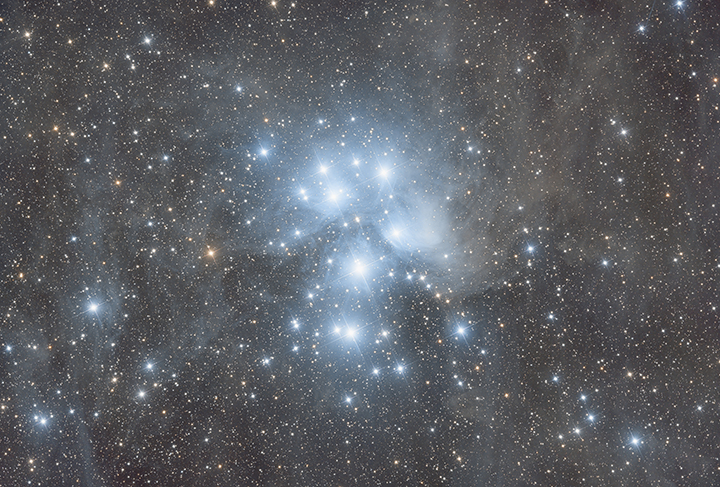

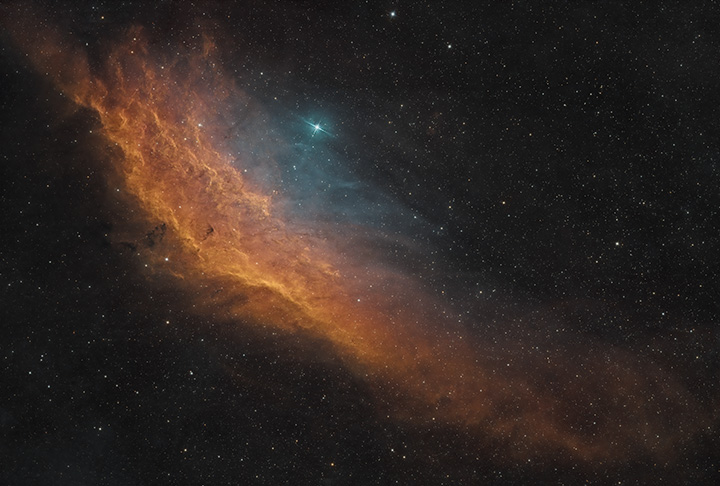

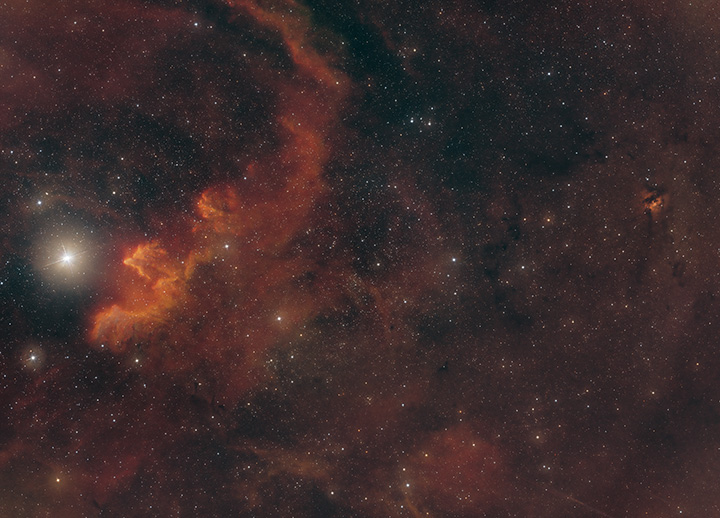
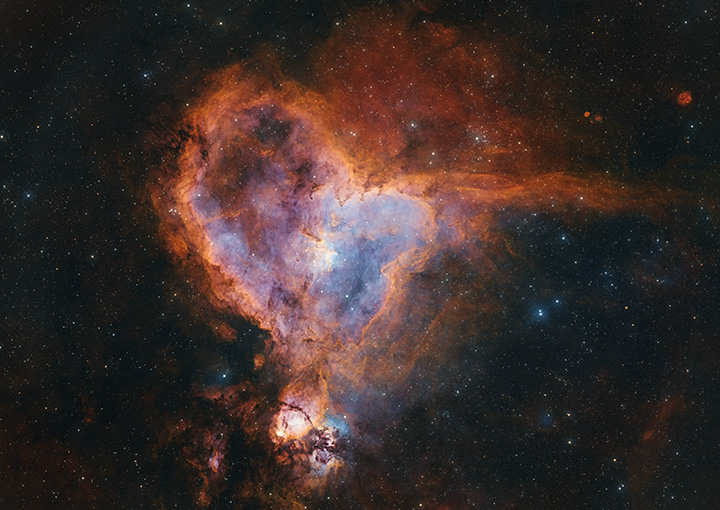





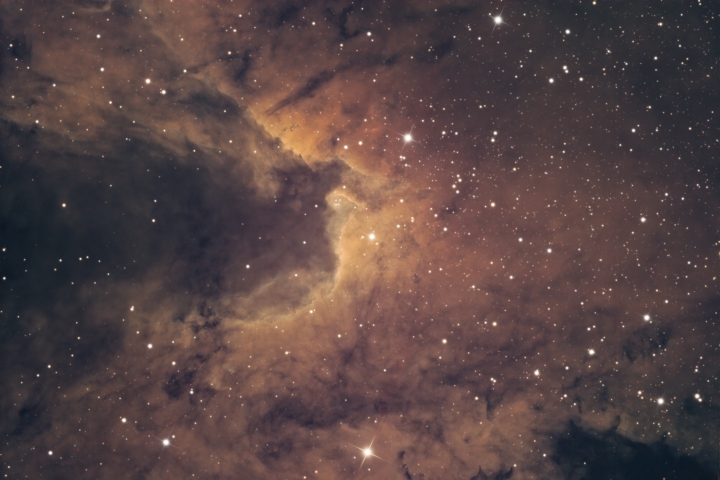

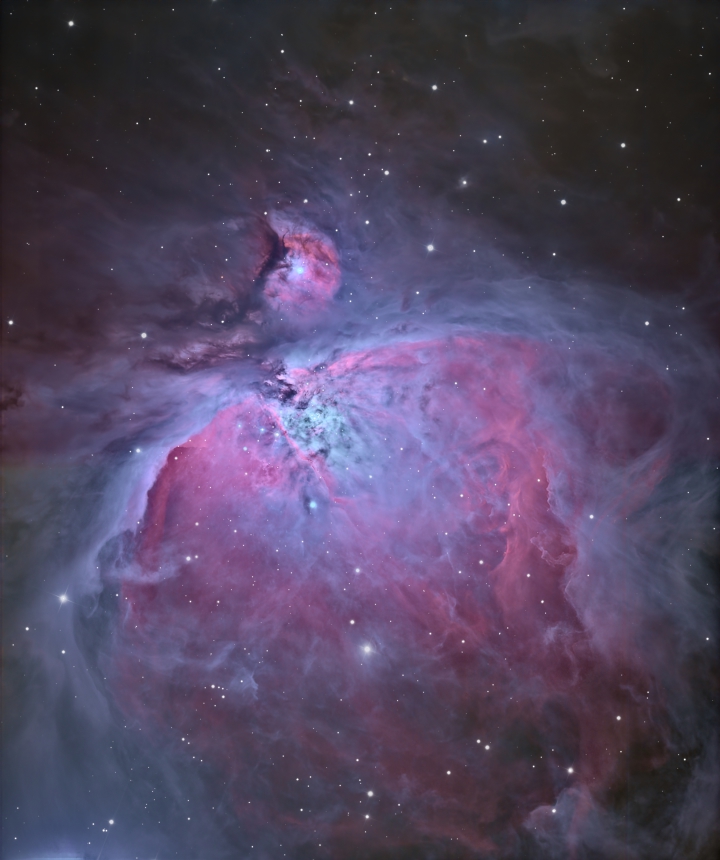
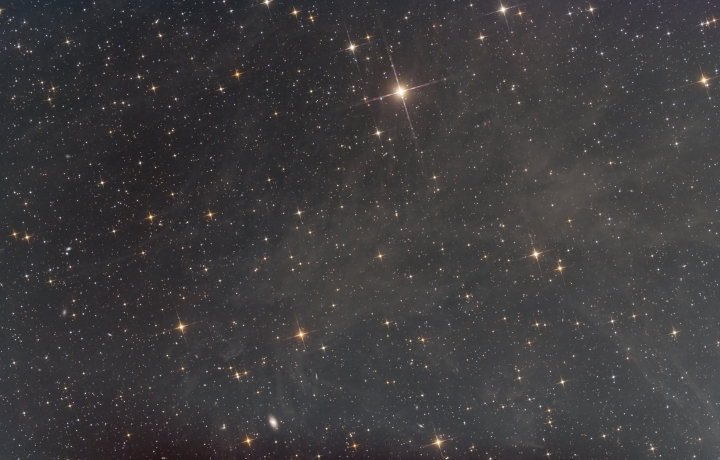

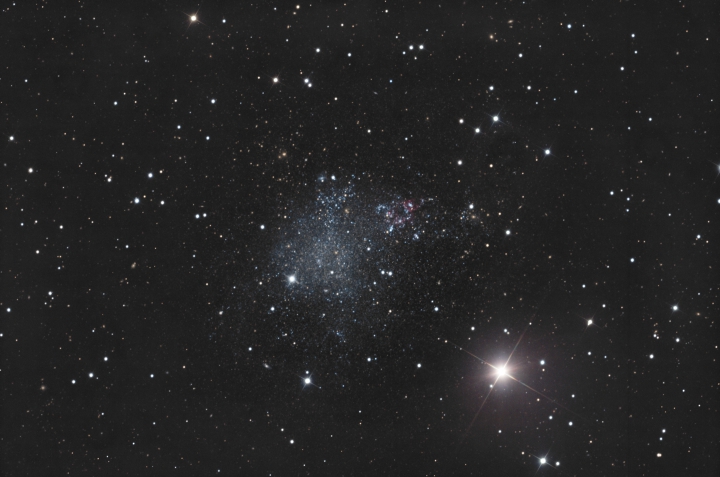


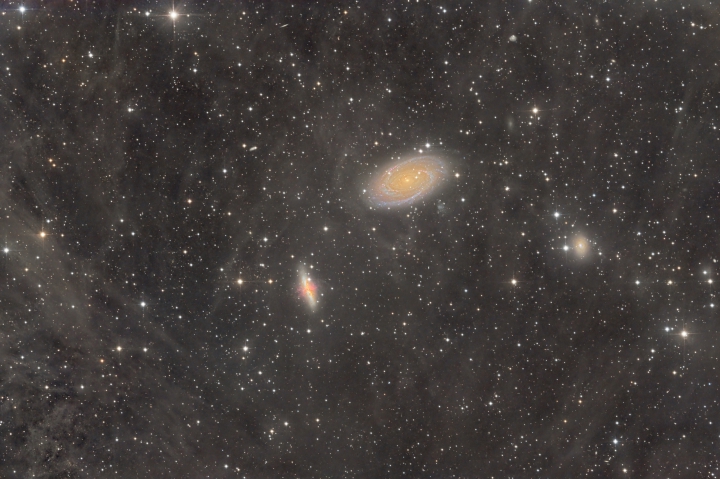

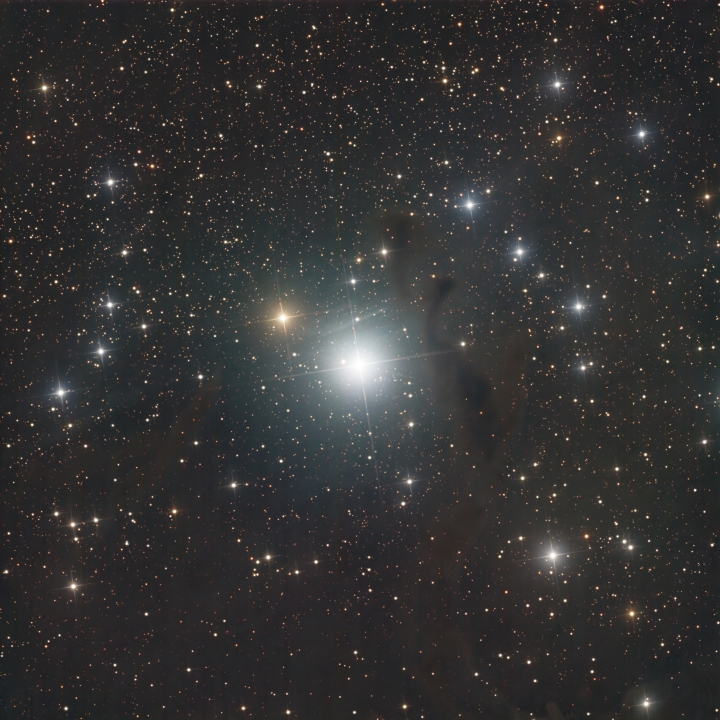




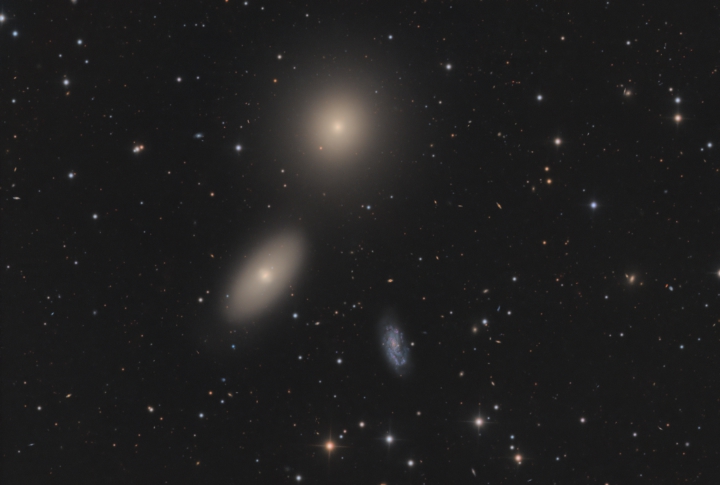



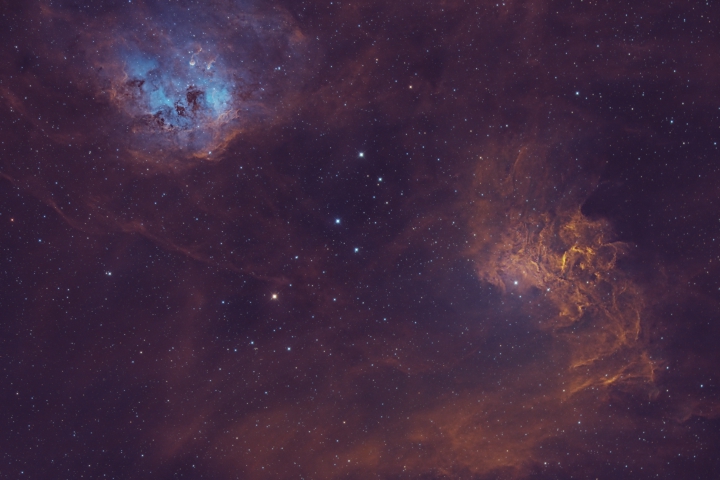








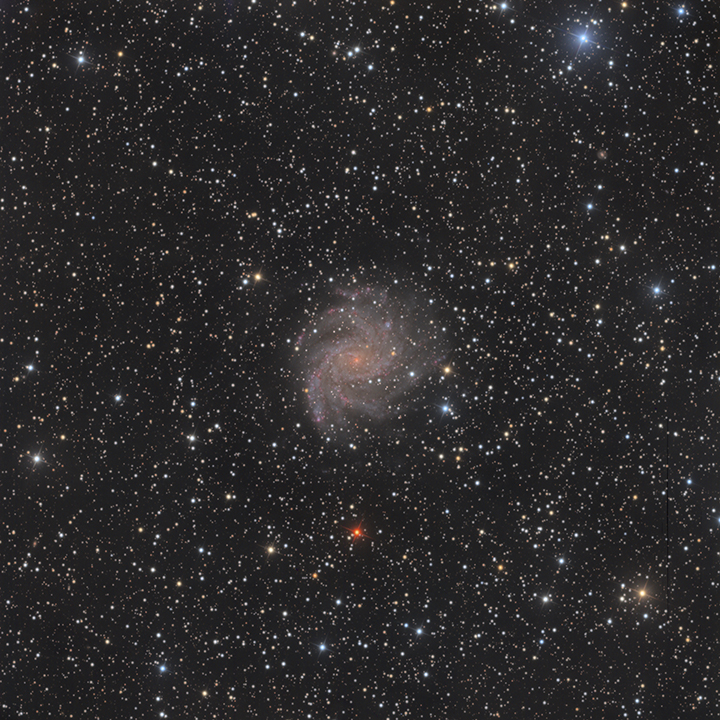
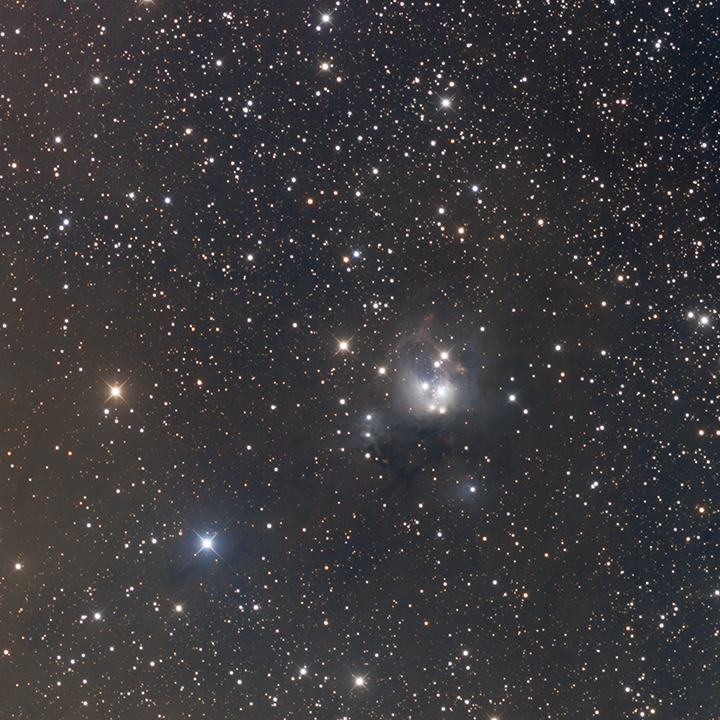
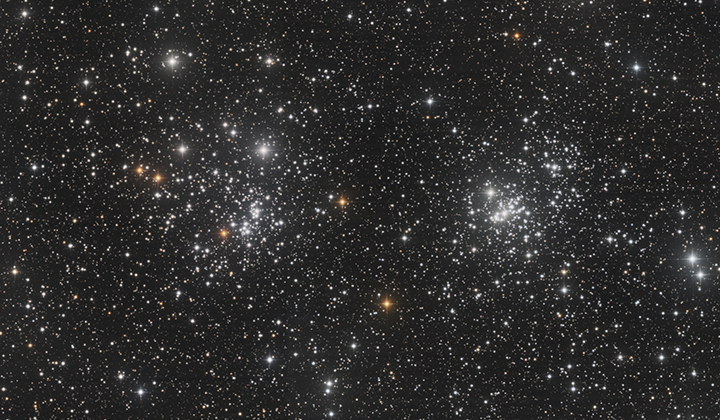
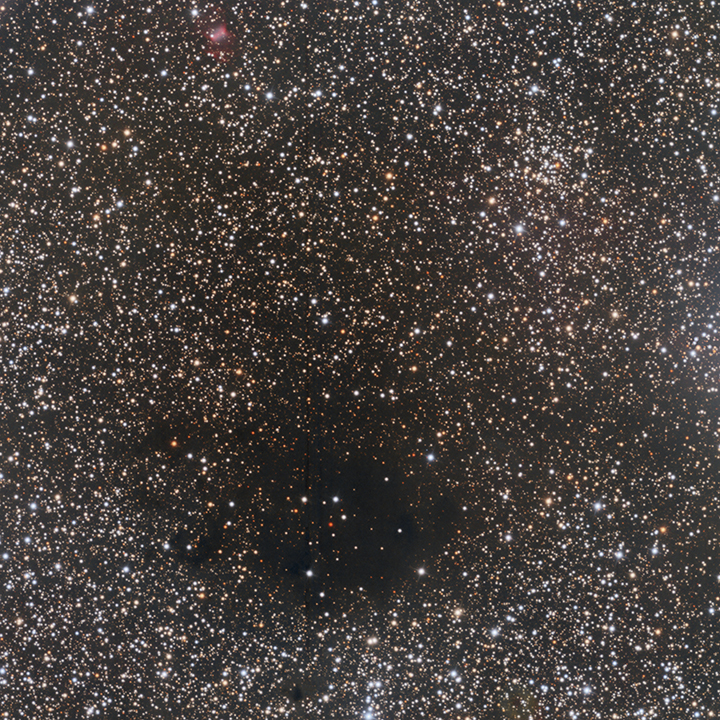
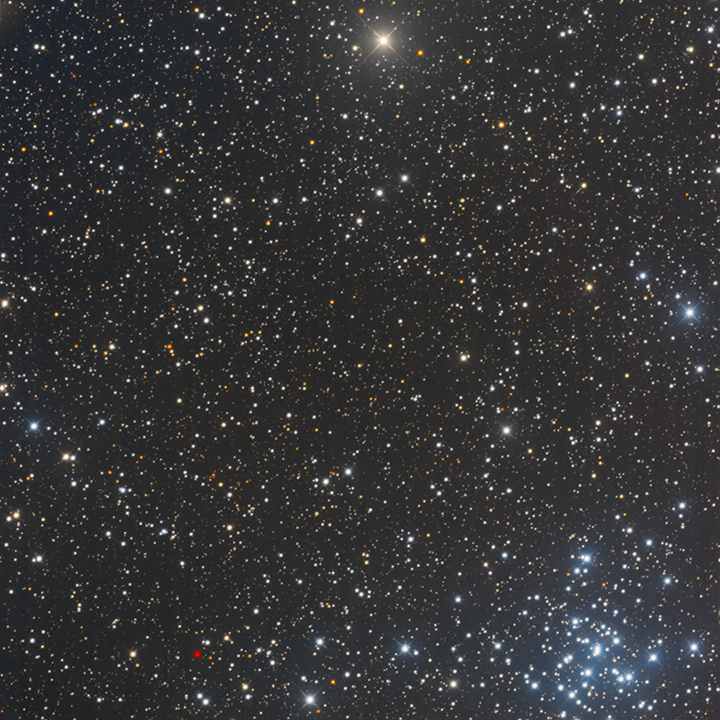

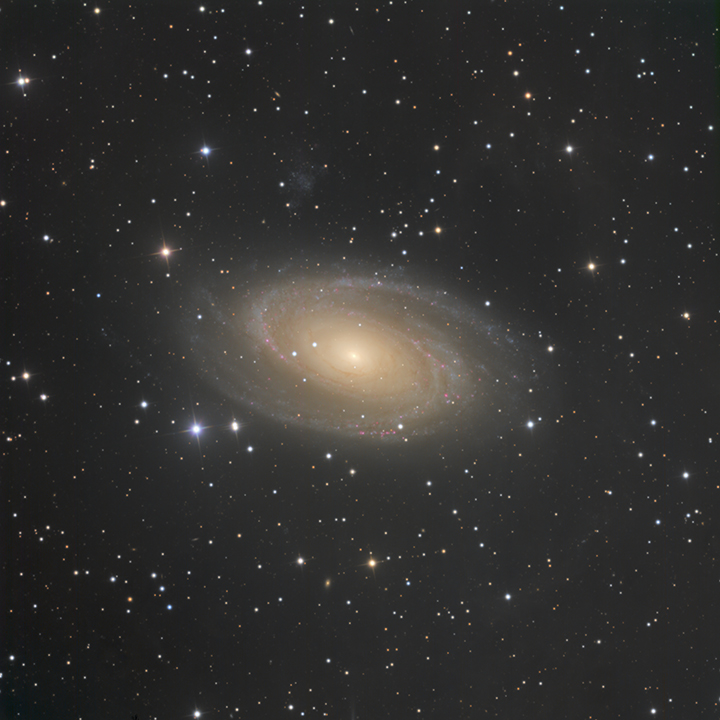





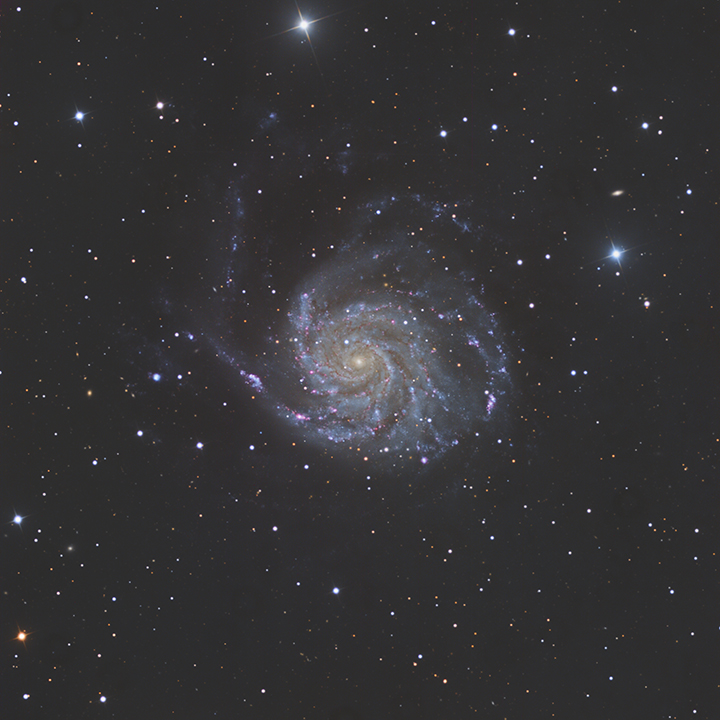
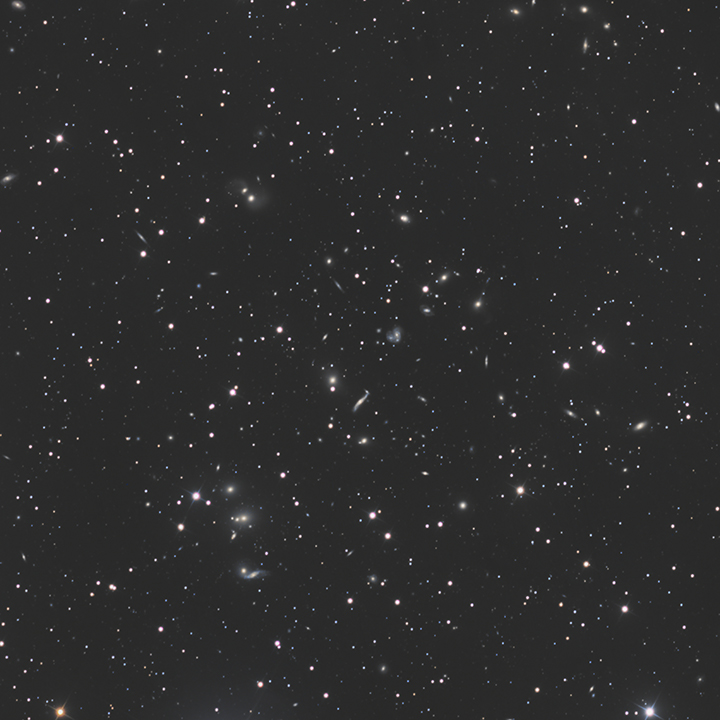







 Thumbnail.jpg)

